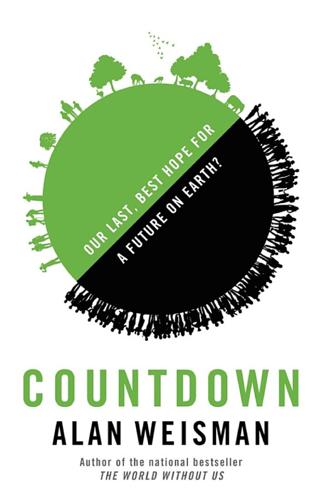
Countdown: Our Last, Best Hope for a Future on Earth?
by
Alan Weisman
Published 23 Sep 2013
Chemical & Engineering News, vol. 86, no. 33 (August 18, 2008). Ronald, Bailey. “Norman Borlaug: The Greatest Humanitarian.” Forbes, September, 14, 2009. http://www.forbes.com/2009/09/14/norman-borlaug-green-revolution-opinions-contributors-ronald-bailey.html. Singh, Salil. “Norman Borlaug: A Billion Lives Saved, a World Connected.” AgBioWorld. http://www.agbioworld.org/biotech-info/topics/borlaug/special.html. Skorup, Jarrett. “Norman Borlaug: An American Hero.” Men’s News Daily, December, 30, 2009. http://mensnewsdaily.com/2009/12/30/norman-borlaug-an-american-hero. Smil, Vaclav. “Detonator of the Population Explosion.”
…
The Ehrlichs had not foreseen Norman Borlaug’s astonishing Green Revolutionary boost to the world’s food supply. In the decades that followed, Ehrlich’s and Borlaug’s names became routinely linked, usually by the former’s detractors. “Ehrlich was sure that ‘the battle to feed humanity is over.’ He insisted that India would be unable to provide sustenance for the two-hundred-million-person growth in its population by 1980,” wrote Duke University engineering professor Daniel Vallero in a 2007 textbook titled Biomedical Ethics for Engineers. “He was wrong—thanks to biotechnologists like Norman Borlaug.” This was a typical jeer: While the doomsayer Ehrlich prophesized starvation in India and Pakistan, Borlaug was bringing both countries to self-sufficiency in wheat production by the mid-1970s.
…
Edwin Wellhausen, recently retired from the International Maize and Wheat Improvement Center, known by its Spanish acronym, CIMMYT.2 Founded by the Rockefeller Foundation near the famous Teotihuacán pyramids northeast of Mexico City, CIMMYT is considered today the birthplace of the so-called Green Revolution. Its late director, Dr. Norman Borlaug, was awarded the Nobel Peace Prize for developing a disease-resistant, high-yield strain of dwarf wheat (dwarf, because normal wheat plants would fall over from the weight of the extra grains Borlaug’s genetically selected strains produced). Edwin Wellhausen was CIMMYT’s corn-breeding specialist.
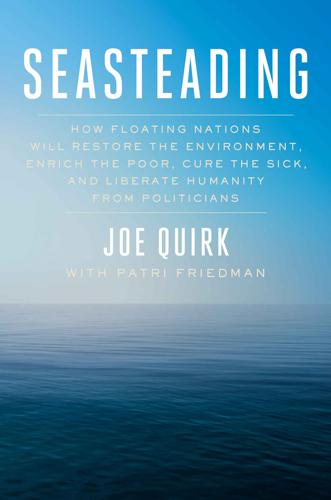
Seasteading: How Floating Nations Will Restore the Environment, Enrich the Poor, Cure the Sick, and Liberate Humanity From Politicians
by
Joe Quirk
and
Patri Friedman
Published 21 Mar 2017
“Because vitamin D is most commonly found in fortified milk products, egg yolk, or oily fish, it is the most likely vitamin to be deficient in vegetarian and macrobiotic diets, but not in lacto-ovo-vegetarian diets.” See also J. T. Dwyer et al., “Risk of Nutritional Rickets Among Vegetarian Children,” American Journal of Diseases of Children 133, no. 2 (February 1979): 134–40, www.ncbi.nlm.nih.gov/pubmed/420181. Spiralina: www.energybits.com/about-algae/about-spirulina.html. Norman Borlaug: “Iowans Who Fed the World: Norman Borlaug: Geneticist.” AgBioWorld, last modified October 26, 2002, www.agbioworld.org/biotech-info/topics/borlaug/iowans.html. David Pimentel . . . will scare the dirt out of you: D. Pimentel, “Soil Erosion: A Food and Environmental Threat,” Environment, Development and Sustainability 8, no. 1 (2006): 119–37.
…
As a result of freshwater consumption from the mid-1990s to 2000, the United Nations estimated that an average of 1,374 square miles of land turned to desert each year—an area about the size of Rhode Island. “Imagine if this freshwater were freed up for other uses,” Ricardo says. From the Green Revolution to the Blue Revelation Norman Borlaug, a plant geneticist from Iowa, is credited by admirers with saving more than a billion lives. Detractors say he really “only” saved several hundred million. Whatever. He and his team spent twenty years applying novel advances in molecular genetics, painstakingly trying thousands of breeding experiments until they cloned a mutant wheat strain that was high yield, resistant to pests and diseases, and required few pesticides.
…
He and his team spent twenty years applying novel advances in molecular genetics, painstakingly trying thousands of breeding experiments until they cloned a mutant wheat strain that was high yield, resistant to pests and diseases, and required few pesticides. In 1965 Borlaug and his colleague Monkombu Sambasivan Swaminathan initiated a campaign to ship the “miracle wheat” to starving nations such as India and Pakistan. In 1968 the US Agency for International Development dubbed Norman Borlaug’s achievement “the Green Revolution.” In 1970 he won the Nobel Peace Prize. During the second half of the twentieth century, global food production doubled, and in developing countries it tripled. Between 1980 and 2000, global food prices halved. In southern India, the Green Revolution was estimated by the World Bank’s World Development Report 2000/2001: Attacking Poverty to have increased farmers’ earnings by 90 percent and those of landless peasants by 125 percent over twenty years.

Not the End of the World
by
Hannah Ritchie
Published 9 Jan 2024
As we’ll see later, many countries can reduce the amount of fertiliser they use without sacrificing food production, but we can’t do this everywhere. Half of the world population is reliant on synthetic fertilisers for food Without synthetic fertilisers, the world could only support a population about half the size that it is today. Norman Borlaug: the Green Revolutionist Fritz Haber and Carl Bosch were the agricultural heroes in the first half of the 20th century. Norman Borlaug gets the crown for the second half. Borlaug was an American scientist, born in 1914, shortly after Haber and Bosch had their fertiliser breakthrough.13 In the 1940s he was employed by the Rockefeller Foundation and sent off to Mexico to try to solve a problem that many had already given up on.
…
Criticism is essential for an effective optimist. We need to work through ideas to find the most promising ones. Most innovators that have changed the world have been optimists, even if they didn’t identify as one. But they were also fiercely critical: no one picks apart the ideas of Thomas Edison, Alexander Fleming, Marie Curie or Norman Borlaug more than they did themselves. If we want to get serious about tackling the world’s environmental problems, we need to be more optimistic. We need to believe that it is possible to tackle them. As we’ll see in the chapters that follow, this is not a pipe dream: things are changing, and we should be impatient about changing them faster.
…
Haber–Bosch: making food out of thin air One of my favourite websites is called Science Heroes: it ranks the giants of the scientific world according to estimates of how many lives they’ve saved. We might imagine that someone in the medical sciences tops the list. But no: it’s the agricultural scientists, Carl Bosch, Fritz Haber and Norman Borlaug. Many of us owe the fact that we are alive to them. In the Haber–Bosch duo, Haber did the scientific tinkering, and Bosch was responsible for bringing it to scale. Fritz Haber was born in Poland (at the time, Prussia, part of Germany) in 1868, and initially worked with his father in the chemical business.9 After one-too-many failed experiments in the business world he was ousted to academia.

An Edible History of Humanity
by
Tom Standage
Published 30 Jun 2009
By this time new, high-yielding varieties of maize had also become widespread, so that during the 1950s the U.S. secretary of agriculture complained that the country was accumulating “burdensome surpluses” of grain that were expensive to store. When it came to the developing world, one man did more than anyone else to promote the spread of the new dwarf varieties: Norman Borlaug, an American agronomist. He went to Mexico in 1944 at the behest of the Rocke feller Foundation, which had established an agricultural research station there to help to improve poor crop yields. The foundation had concluded that boosting yields was the most effective way to provide agricultural and economic assistance, and reduce Mexico’s dependence on grain imports.
…
His rule-bending also had another, unanticipated benefit: In order to thrive as both summer and winter crops, the resulting varieties could not afford to be fussy about the difference in the number of hours of daylight between the two seasons. This meant their offspring could subsequently be cultivated in a wide range of different climates. Norman Borlaug. In 1952 Borlaug heard about the work being done with Norin 10, and the following year he received some seeds from America. He began to cross his new Mexican varieties with Norin 10, and with a new variety that had been created by crossing Norin 10 with an American wheat called Brevor. Within a few years he had developed new wheat strains with insensitivity to day length and good disease resistance that could, with the use of nitrogen fertilizer, produce more than twice the yield of traditional Mexican varieties.
…
India’s grain imports fell almost to zero by 1972, and the country even became an exporter for a while during the 1980s. Further improvements in yields followed in subsequent years as Indian agronomists crossed the Mexican varieties with local strains to improve disease resistance. India’s wheat harvest reached 73.5 million tons in 1999. Norman Borlaug’s early success with high-yield dwarf varieties of wheat, meanwhile, had inspired researchers to do the same with rice. The International Rice Research Institute (IRRI), based in the Philippines and funded by the Rocke feller and Ford foundations, was established in 1960. Borlaug’s shuttle-breeding approach was adopted to speed up the development of new varieties.
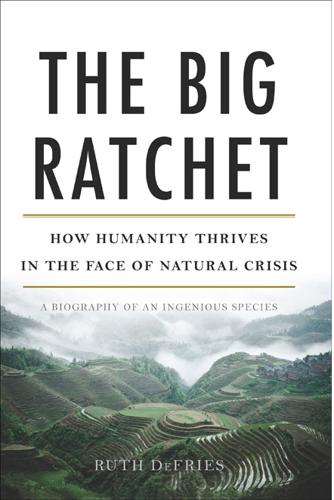
The Big Ratchet: How Humanity Thrives in the Face of Natural Crisis
by
Ruth Defries
Published 8 Sep 2014
More benign ways to control pests were suddenly ignored, and the new methods endangered both people and wildlife. But judicious use of the chemical does have its place. It fights back against the tragic human toll levied by malaria, particularly in the tropics. Pesticides were also contributing to increasing yields that made food more affordable. Norman Borlaug, a key scientific figure, whose life’s work was to spread the benefits of technology to improve food production in the developing world, clamored back with humanitarian arguments. He assailed the ban as “unwise legislation that is now being promoted by a powerful group of hysterical lobbyists who are provoking fear by predicting doom for the world through chemical poisoning,” and he warned that with the ban “the world will be doomed not by chemical poisoning but from starvation.”
…
With pesticides as part of the toolkit, along with postwar factories to produce chemical fertilizers, abundant petroleum to power machinery, vigorous offspring from hybrid seeds, and short, stout stems that withstood the weight of fertilized, amply watered plants, more genetic ratchets were in store for the century’s second half. This time, the repercussions ricocheted around the world. 9: THE REVOLUTION GOES GLOBAL OF ALL THE PEOPLE WHOSE IDEAS and innovations sent the world hurtling toward the post–World War II explosion in what and how much people eat, one name stands out: Norman Borlaug, the plant breeder from the American Midwest who countered Rachel Carson’s criticisms of chemical pesticides. Some revere Borlaug as a humanitarian saint. Others revile him for the enormous changes he ushered in throughout the developing world. Borlaug came of age in his profession at a time when all the pieces of the Big Ratchet were in place.
…
Lower than normal rainfall in the mid-1960s had led to poor harvests. The population was outstripping production of wheat and rice. Hunger was widespread, and the country was importing large quantities of grain. But when Ehrlich talked with people familiar with the Indian situation, he clearly had not listened to Norman Borlaug. In 1965, in consultation with Indian government officials, Borlaug’s trainees had carried 200 tons of high-yielding seed from Mexico to India. The following year, they had imported 18,000 tons and a massive amount of fertilizer. Indian plant breeders crossed local varieties with the Mexican lines containing the Norin 10 dwarfing gene under the leadership of M.
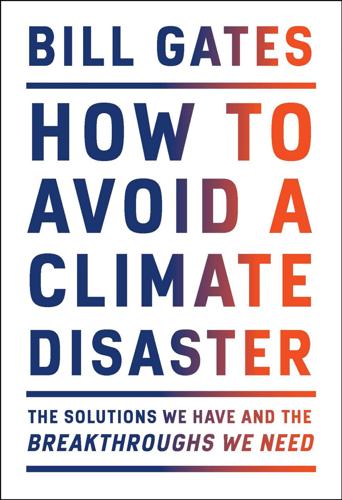
How to Avoid a Climate Disaster: The Solutions We Have and the Breakthroughs We Need
by
Bill Gates
Published 16 Feb 2021
I’m not saying that malnutrition isn’t a serious problem in some places. It is. In fact, improving nutrition for the world’s poorest is a key priority for Melinda and me. But Ehrlich’s prediction of mass starvation was wrong. Why? What did Ehrlich and other doomsayers miss? They didn’t factor in the power of innovation. They didn’t account for people like Norman Borlaug, the brilliant plant scientist who sparked a revolution in agriculture that led to the gains in India and elsewhere. Borlaug did it by developing varieties of wheat with bigger grains and other characteristics that allowed them to provide much more food per acre of land—what farmers call raising the yield.
…
(One downside of these new varieties is that they need lots of fertilizer to reach their full growth potential, and as we’ll discuss in a later section, fertilizer has some negative side effects.) I love the fact that one of history’s greatest heroes had a job title—agronomist—that most of us have never even heard of. So what does Norman Borlaug have to do with climate change? The global population is headed toward 10 billion people by 2100, and we’re going to need more food to feed everyone. Because we’ll have 40 percent more people by the end of the century, it would be natural to think that we’ll need 40 percent more food too, but that’s not the case.
…
Walking around the warehouse, I talked to workers filling bags with tiny white pellets containing nitrogen, phosphorus, and other nutrients that would soon be nourishing crops in one of the poorest regions in the world. It was the kind of trip I love to take. I know it sounds goofy to say this, but to me fertilizer is magical, and not just because it makes our yards and gardens prettier. Along with Norman Borlaug’s semi-dwarf wheat and new varieties of corn and rice, synthetic fertilizer was a key factor in the agricultural revolution that changed the world in the 1960s and 1970s. It’s been estimated that if we couldn’t make synthetic fertilizer, the world’s population would be 40 to 50 percent smaller than it is.

Twilight of Abundance: Why the 21st Century Will Be Nasty, Brutish, and Short
by
David Archibald
Published 24 Mar 2014
We are now in the twilight of that age of abundance. Consider some facts. World population was 2 billion in 1930. Now it is 7 billion, up 250 percent. World grain production was 481 million metric tons in 1930. Now it is 2.4 billion metric tons, up 392 percent thanks to the green revolution pioneered by Norman Borlaug and others. Grain prices fell all through that period—up until the last few years. Developing-country wheat yields peaked at 2.7 metric tons per hectare in 1996 and have plateaued thereafter. Developed-country grain yields have plateaued from 2000. In the last decade, the supply overhang has been absorbed, and now grain prices are running up.
…
Food subsidies are a major part of the budgets of most countries in the region. But those subsidies are unsustainable, and the inevitable day of reckoning is coming. Most of the people in this region are poor, and they don’t suffer from existential angst, and thus while they are being fed, they breed. Thus the problem is compounding on itself. Arguably, Norman Borlaug with his green revolution in grain yields simply put off the overpopulation disaster by thirty years and made it twice as bad. The industrial production of the entire Arab world is less than that of Finland. What is keeping the MENA countries fed is income from oil production and misguided aid funding.
…
Since oil exports provide most of the Iranian government’s revenue, its ability to project power will be much reduced unless it somehow co-opts Iraqi production. THE OUTLOOK FOR WORLD GRAIN PRODUCTION The world’s last major starvation event was the Indian drought of 1967, which killed about 1 million people. At about that same time, wheat yields in developing countries started rising, thanks to the efforts of Norman Borlaug and others in breeding dwarf strains of wheat. Wheat yields in developing countries increased 200 percent over the thirty years up to 1996 and have plateaued since. Wheat yields in developed countries plateaued from 2000. Wheat and corn prices had been in decline since the Second World War and bottomed in about 2000.
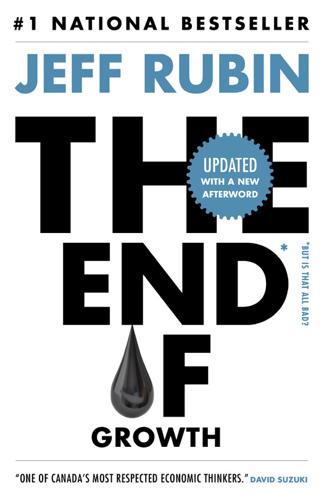
The End of Growth
by
Jeff Rubin
Published 2 Sep 2013
For thirty-five trucks that were stopped at the National Guard’s cordon, the most pressing issue wasn’t civil rights in the United States, but hunger in the developing world. The convoy, prevented from getting to the LA harbor by the guardsmen, was carrying seeds from an experimental agricultural facility outside Mexico City. These particular seeds had been developed at the International Maize and Wheat Improvement Center by Norman Borlaug, an American agronomist who had been working on agricultural research in Mexico since 1944. Borlaug was born on a farm in Iowa in 1914. By the time he reached college, the Midwest was turning into a dust bowl and Borlaug, like so many others, could only watch as people around him went hungry.
…
More than forty years ago, Borlaug and his colleagues found a way to expand the limits of a finite world. Today, we need to draw on the same spirit of ingenuity, innovation and tenacity to help us negotiate demographic pressures that will mount with renewed urgency in the coming years. WHERE HAVE YOU GONE, NORMAN BORLAUG? A NATION TURNS ITS LONELY EYES TO YOU The American journalist George Will is attributed with saying that the future has a way of arriving unannounced. Whether we’re ready for it or not, a world of static economic growth is almost here. The biggest question now is how well we deal with it. Hydrocarbons have powered the world for more than a century.
…
There’s one fact that should provide some comfort: the frightening predictions of doomsayers from the Reverend Malthus to Paul Ehrlich and James Lovelock haven’t come to pass. When faced with big problems, we’ve always found ways to adapt, and there’s no reason why we won’t do so again. Human ingenuity shouldn’t be underestimated. Even now, there are more Norman Borlaugs working tirelessly to help usher in a better future. Undoubtedly, some of these researchers will make breakthroughs in renewable energy that will help us transition away from our hydrocarbon economies. But that’s still an eventuality. Right now, renewable sources are only a welcome part of the energy mix; they don’t offer a panacea.

The Most Good You Can Do: How Effective Altruism Is Changing Ideas About Living Ethically
by
Peter Singer
Published 1 Jan 2015
Morley Winograd and Michael Hais, How Millennials Could Upend Wall Street and Corporate America, Brookings Institute, Washington, DC, 2014, http://www.brookings.edu/∼/media/research/files/papers/2014/05/millennials%20wall%20st/brookings_winogradv5.pdf. Chapter 5. Other Ethical Careers 1. MacAskill said this in response to a question from Jeff Kaufman: https://www.facebook.com/jefftk/posts/613456690752?comment_id=713258. 2. See, for example, The World Food Prize, “About Dr. Norman Borlaug,” http://www.worldfoodprize.org/en/dr_norman_e_borlaug/about_norman_borlaug/. 3. Benjamin Todd, “Which Cause Is Most Effective?,” January 21, 2014, http://80000hours.org/blog/300-which-cause-is-most-effective–300. 4. Wojciech Bonowicz and Janina Ochojska, Niebo to inni (Krakow: Znak, 2000), 183. 5. Polish Humanitarian Action, Annual Report, 2012; http://www.pah.org.pl/m/3626/PAH%20raport%20roczny%202012en.pdf. 6.
…
Researchers For those with particular abilities in research, there may be special opportunities to do a great amount of good by a career in research. Most probably, though, this will not be in the obvious fields, like finding a vaccine for malaria or breeding better varieties of food crops. In the past, medical researchers have made discoveries that dramatically reduced or eliminated diseases like polio and smallpox, while the biologist Norman Borlaug, who bred the high-yielding grain varieties that led to the Green Revolution, is said to have saved more lives than anyone who has ever lived.2 The impressive and highly publicized successes of scientists in these fields have drawn many highly talented researchers into the same areas of research, so the chances are small that any individual—such as you—will be able to make important discoveries that would not otherwise have been made.
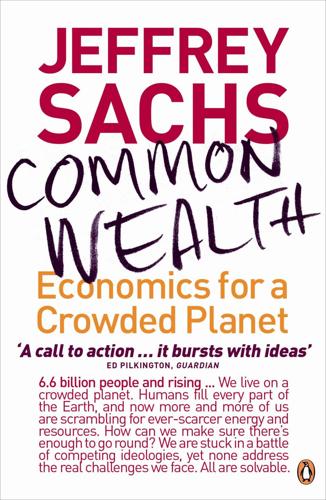
Common Wealth: Economics for a Crowded Planet
by
Jeffrey Sachs
Published 1 Jan 2008
As in Korea and Taiwan, the colonial era bequeathed to India some vital infrastructure, especially the rail system, which served India in crucial ways during its recent economic takeoff. Even more important, India’s Green Revolution of the 1960s and 1970s was strongly supported by external assistance. Though India has wonderful indigenous scientific capacity, the Rockefeller Foundation’s support for improved wheat varieties also was crucial. Two great scientists, Norman Borlaug, of the Rockefeller Foundation, and M. S. Swaminathan, India’s director of wheat research in the 1960s, teamed up to disseminate the improved seed varieties first developed by Borlaug in Mexico and selected for applicability to Indian conditions by Swaminathan’s team. Their work took on special urgency after back-to-back droughts in 1964–65, which required India to rely on massive shipments of emergency U.S. food aid.
…
The International Campaign to Ban Landmines won in 1997, and Joseph Rotblat and the Pugwash Conferences on Science and World Affairs won in 1995 for NGO activity devoted to nuclear disarmament. Amnesty International received the prize in 1977 for NGO leadership in putting human rights at the forefront of global political and social awareness, and in 1970, Norman Borlaug won the prize for the Green Revolution technologies he helped to develop and bring to India, all with the backing of the Rockefeller Foundation. One can say that the most important economic development institution in the world during the twentieth century was a path-breaking NGO, the Rockefeller Foundation.
…
Cross-disciplinary efforts, such as the one I direct at The Earth Institute at Columbia University, are promising ways to recast the conventional disciplinary lines so that the expertise of the university can be harnessed on complex interdisciplinary challenges. In 1993, the father of the Green Revolution, Nobel laureate Norman Borlaug, summarized beautifully the case for such a multidisciplinary science-based unit: It seems to me that as our science becomes more specialized, each of us is inclined to give more emphasis to our own specialty, our own discipline. This creates great difficulties when we are trying to transmit the global picture of the impact of science and technology, not just on one discipline but on all of them, including economics, for the benefit of the policy maker, so that he can gather the true essence of what we are talking about, in many different languages as it were.
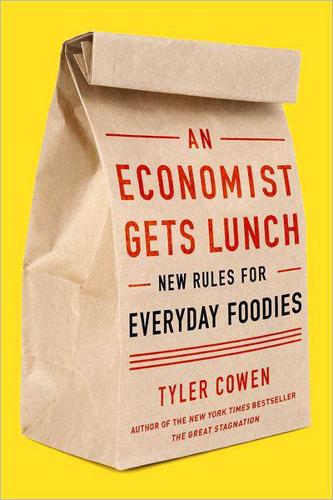
An Economist Gets Lunch: New Rules for Everyday Foodies
by
Tyler Cowen
Published 11 Apr 2012
Today, the young people are getting taller rapidly but the older people are still very short. The women have a lot more free time, in part because they are not making blue corn tortillas all day long, yet still the tortillas are available. Another Green Revolution, the one associated with the formal name, originated from Norman Borlaug, and it too arrived first in central Mexico. I call this the third Green Revolution. Borlaug was an American scientist of Norwegian background who became fascinated with maximizing the yield from agricultural crops. He found himself working in Central Mexico, as part of a Rockefeller Foundation program to improve agricultural yields.
…
In the case of the Chinese famines of the early 1960s, or the recent North Korean famines, tyrannical communist regimes simply refused to allow food markets to function at all. Finally, a longer-term source of food problems is relatively low productivity gains in agriculture. The supply of food grew much faster than the world’s population from the years 1970 to 1990, in part because of Norman Borlaug’s Green Revolution. But since that time, agricultural gains have come at a slower rate. In particular agricultural productivity has not spread to Africa at the same rate as it spread during the Green Revolution. Since 1990, food production has grown at a slower rate than has population growth.
…
Yet while China is getting richer at about 10 percent a year, the average for its last thirty years, it is not growing 10 percent more food every year. Their manufacturing productivity has grown more rapidly than has their agricultural productivity. In other words, Chinese demands push up the price of food, yet without bringing a new Green Revolution comparable to what Norman Borlaug did. The odds are that some Chinese will eventually make such an agricultural breakthrough, but in the meantime global food prices will be higher than usual. It’s not just that China is making no major new agriculture technologies, but fundamentally new agricultural productivity improvements have slowed down since at least the 1990s, another kind of “great stagnation.”
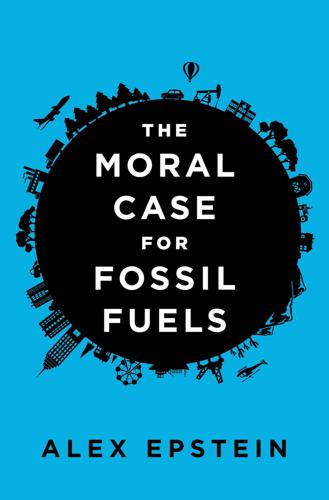
The Moral Case for Fossil Fuels
by
Alex Epstein
Published 13 Nov 2014
World food production cannot keep pace with the galloping growth of population.”23 In 1968, the world’s population was 3.6 billion people.24 Since then, it has doubled, yet the average person is better fed than he was in 1968.25 This seeming miracle was due to a combination of the fossil fuel industry and genetic science—such as the achievements of the great Norman Borlaug, who bred new revolutionary wheat varieties and introduced new farming techniques to Mexico, India, Pakistan, China, and parts of South America. Modern agriculture, like every modern industry, runs on machines, and fossil fuel energy is our leading source of machine food. Therefore, fossil fuel energy is the food of food.
…
The cheaper transportation became, the more farmland came into the global agricultural economy, and the more plentiful and affordable food became. By the same token, the cheaper transportation became, the more new seeds and other supplies could be brought to new locations to make previously low-performing land yield a giant amount of crops. Much of the green revolution led by Norman Borlaug involved bringing in new, more resilient forms of wheat and rice to places like India; this was expedited and amplified by cheap, global, oil-powered transportation. Another example: Gas-based fertilization increases the amount of crops that can be grown per unit of farmland. The amount of crops we can grow today is an utterly “unnatural” phenomenon—that is, it is way beyond the natural capacity of the nutrients in land to nourish crops in one season, let alone season after season.
…
The supplies of guano off the coasts of South America and South Africa were being exhausted, which caused eminent chemist William Crookes to declare in 1898 that “all civilisations stand in deadly peril of not having enough to eat.”27 The solution was Fritz Haber and Carl Bosch’s process of making large quantities of synthetic nitrogen fertilizer using enormous amounts of methane—the predominant component of natural gas.28 Another example: Electricity-based (usually coal-based) or diesel-based irrigation increases the amount and reliability of water going to crops. Irrigated lands average more than three times the crop yields of rain-fed areas. Sometimes irrigation occurs via gravity, but when it doesn’t, it takes a lot of energy—usually fossil fuel energy—to move the water.29 Finally, the achievements of Norman Borlaug and other great food scientists, often called the green revolution (not related to the modern Green movement), were possible only because of the time created by fossil-fueled civilization to engage in intensive research, because high-powered machines have made it unnecessary for all of us to do physical labor.
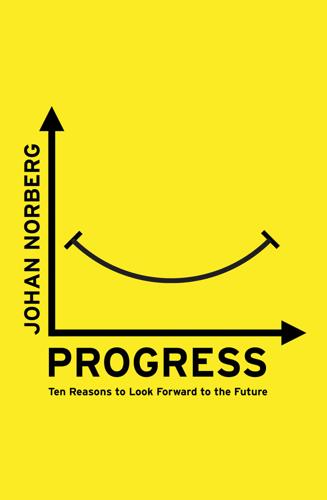
Progress: Ten Reasons to Look Forward to the Future
by
Johan Norberg
Published 31 Aug 2016
Just when they said that the battle was lost, we made huge gains, and no one fought more bravely for humanity than Norman Borlaug, an agronomist from Iowa, who was obsessed with the problem of global hunger. In one episode of the TV series Bullshit! the magicians Penn and Teller play a game of ‘The Greatest Person in History’, with all the pretenders, religious leaders, presidents and revolutionary heroes in one deck. Like poker, each player places bets based on how good their cards are – but they might be bluffing. Penn draws one card and immediately goes all in, because he knows he is going to win. He got lucky: he drew Norman Borlaug. The story of Borlaug and the global Green Revolution that he initiated begins in Mexico in 1944, when he started working there for the Rockefeller Foundation on agricultural development.25 The programme was initiated to teach Mexican farmers new methods, but Borlaug was obsessed with coming up with better, higher-yield crops.
…
Artificial fertilizer has caused oxygen depletion in many marine systems, but it also saved us from depleting wildlife and turning our planet into ‘Skinhead Earth’.31 In 1970, Borlaug won the Nobel Peace Prize for his work in increasing the global food supply. As US Senator Rudy Boschwitz put it: Dr. Norman Borlaug is the first person in history to save a billion human lives. But he must also get credit for saving the wild creatures and diverse plant species on 12 million square miles of global forest that would long since have been ploughed down without the high-yield farming he pioneered. The two accomplishments combined make him dramatically unique.32 Nonetheless, arguments against modern agricultural technology have had a huge impact on the debate, and some environmentalists object to nitrogen fertilizer on principle, despite the human cost.

No Such Thing as a Free Gift: The Gates Foundation and the Price of Philanthropy
by
Linsey McGoey
Published 14 Apr 2015
But the corn has come with a price tag that is literally too high to bear, forcing farmers to take larger and larger loans from unlicensed lenders charging crippling rates.17 Suicide rates among Indian farmers have skyrocketed in recent years. In a grim irony, to end their lives, heavily indebted farmers turn to the same implements that failed them. Often with borrowed funds, they secure the $10 or so that it costs to buy a bottle of pesticide, and swallow it whole before settling to sleep.18 Norman Borlaug, who won a Nobel Peace Prize in 1970 for his pioneering role in the Green Revolution, later acknowledged that the overuse of pesticides was eroding some of the gains of the agricultural revolution. He called for more judicious use of fertilizer and pesticides in future.19 Bill Gates has repeatedly suggested that we need to extend the Green Revolution to Africa.
…
Peter Buffett, ‘The Charitable-Industrial Complex,’ New York Times, 26 July 2013. 15Raj Patel, Eric Holt Gimenez, and Annie Shattuck, ‘Ending Africa’s Hunger’, The Nation, 21 September 2009. 16Raj Patel, Stuffed and Starved: Markets, Power and the Hidden Battle for the World’s Food System (London: Portobello Books, 2013). 17Somini Sengupta, ‘On India’s Farms, a Plague of Suicide’, New York Times, 19 September 2006. 18See Patel, Stuffed and Starved. 19Justin Gillis, ‘Norman Borlaug, Plant Scientist Who Fought Famine, Dies at 95’, New York Times, 13 September 2009. See also Patel et al., ‘Ending Africa’s Hunger’, and Dowie, American Foundations, esp. 128–33. 20Quoted in David Rieff, ‘A Green Revolution for Africa?’, New York Times Magazine, 10 October 2008. 21‘Is Africa Ready for GM?’
…
Gates Foundation, 116 Gates, Frederick T., 15, 55, 71 Gates, Melinda: and investing in primary and secondary education, 116; and philanthropy, 146, 159, 245; and polio eradication, 159; and small schools, 134, 136; and speaking out for contraception use, 22; and talk at the World Health Assembly, 244; and taxes paid by Gates Foundation, 85; and TED talk on non-profits, 227; as trustee of Gates Foundation, 8, 174 Gates Foundation: activities of, 23, 24, 101, 199; and affordable medicines, 24, 193; and agriculture, 21, 207, 209, 216, 217; and Alliance for a Green Revolution in Africa, 217, 222; and Cargill partnership, 216; and Coca-Cola, 26–7, 222, 227–9; and Common Core, 137; and connections to Goldman Sachs, 215–6; and contributions to American Legislative Exchange Council, 132; and contributions to World Health Organization, 8, 224; and costly vaccines, 160–1; criticisms of, 21–8, 135, 136–7, 146–7; and donations to teachers’ unions, 137; and donations to US Chamber of Commerce, 137; as a donor to the Foundation for Excellence in Education, 133; as a donor to the Global Fund to Fight AIDS, Tuberculosis and Malaria, 193; and education, 7, 27–8, 122, 132–47; and empowering regional organizations, 177; and emulation of Microsoft’s strategies, 143; and exclusion of scientists from low-income countries, 176; and experimental medical trials, 153; and fight against AIDS, 193; and fighting malaria, 7, 153; and financial concerns, 192; and funding for an electronic database of students, 133–4; and funding for global health programmes, 153, 154; and funding of HPV vaccine trials in India, 161, 169, 229; and funding of journalism, 26; and funding the Measure of Effective Teaching study, 140–1; funding priorities of, 175–6, 244; and Gates’s fortune, 9, 85; and giving money to states, 139–4; and Global Alliance for Vaccines and Immunization, 177; and Goldman Sachs, 209–10; and grants to countries and universities in developing regions, 175, 244–5; and grants to Ogilvy and ABC News, 84, 202–3; and grants to organizations in high-income countries, 175–6; and grants to organizations in US, 175, 178; and grants to Vodacom, 82, 84, 85, 203; and grant to TechnoServe, 227–8; history of, 116–7; and HIV/AIDS, 7, 196; and holdings in oil companies, 21; and impact on India’s health policies, 169–70; importance of, 21, 28; and improving sanitation, 153; and International Red Cross-Ghana, 177, 178; and investment in Berkshire Hathaway, 173; and investment in biotechnology companies, 175; and investment in small schools, 134, 145; investment problems of, 244; and lack of accountability, 146–7, 215, 240–1; and lack of grants for researchers outside Europe and North America, 21–2; as largest philanthropic supporter of US primary and secondary education, 122; and Learning Communities, 135; and letter by Gates on education, 121–2; and media efforts, 202, 205; and mission related investing, 175; money of, 22, 25, 31, 117; and Monsanto, 27, 206, 209–10, 218, 221, 229; and multinational partners, 19, 82, 85; and national immunization programmes, 160–1; and News Corp, 133; and NewSchools Venture Fund, 142; and opposition to Harvard’s proposal for HIV treatment, 192; and participation in Alliance for a Green Revolution, 218; and partnership with Broad Foundation, 139; and partnerships with exploitative companies, 172–3; and partnership with Rockefeller Foundation, 217; personnel system of, 142–4; and philanthrocapitalism, 7; and philanthropy, 147, 183; and polio efforts, 156, 157; power of, 230; and primary and secondary for-profit schools, 9; and private charter schools, 118; and programme-related investment, 175; public profile of, 154; and public shaming of teachers, 144–5; and research of PATH in India, 166; and research on non-communicable diseases, 223; as a results-driven organization, 145–6; and sales of shares of McDonalds, 174; and scientific research, 197; and shaping of global health field, 27–8, 153, 169–70; and shares in Berkshire Hathaway, 215, 228; and shares in Monsanto, 216; and solutionism, 240; and spending on global health issues, 149, 153, 175, 178; and stake in Coca-Cola, 173, 174; and stake in GEO Group, 173; and stake in McDonalds, 173; and Stand for Children, 142; and standardized testing, 134, 145; and support of contraception, 102; and tax-deductible grants, 27, 85; tax exemptions for, 228; and teacher effectiveness, 134; and teacher performance linked to standardized test scores, 145; and teachers’ remuneration, 118, 134; top-down approach of, 136–7; and treatment for HIV, 194; and trials of genetically modified bananas, 228; trustees of, 8, 174, 215; and US public education, 21, 22, 118, 121–2, 170; and value-added modelling, 140, 142; and withdrawal of money for small schools, 134 Gates Library Foundation, 116–7 Germany, 154, 240 Ghana: and Accra, 1–3, 5, 150; and Coalition of NGOs, 176–7; feelings about Gates Foundation in, 21; free public healthcare in, 170–1; gold, diamond and oil wealth of, 2, 3; and government development of water delivery services, 177; health burdens in, 2; and health experts working for foreign NGOs, 170–1; immunization in, 5; inequality in, 2, 3; and International Red Cross-Ghana, 177; and loan requirements from the IMF and World Bank, 170; middle-income status of, 2, 3; outbreak of cholera in, 2; and polio, 5 Goldhaber, Dan, 126–7 Goldman Sachs: and creation of the Goldman Sachs Commodity Index, 212; and exemption from position limits in market, 212–4; and Gates Foundation, 209, 216; and investment in by Buffett, 215; and market distortions, 243 Google, 64, 83, 242 Gore, Al, 63, 188–9 government: and accountability, 102; aid and welfare programmes of, 146; and big government, 236; and Coleman Report on schools, 126–7; and corporations exploitation of trade treaties, 101; and decline in state funds, 98; and donor-advised funds, 231–3; and education reform, 139–40; and funding of for-profit schools, 131; and funds for K12 company, 130; and idea of a single land tax, 115; and India’s eradication of polio, 155–6; as instrumental in Google’s success and in discovery of molecular antibodies, 83; and intervention, 60, 242; and investment in private companies, 83; and military might, 51; and money available for spending on social programmes, 230, 243; and national immunization programmes, 160–1; and need for regulation, 93–4; and non-profit sector, 241; and oversight of private foundations, 233; as a partner with philanthropic institutions, 70–1; and patents, 179; and pressure to contribute to global health, 154; and privatization of social services, 113–4; and requirements for pharmaceutical companies, 105; and separation of church and state, 237; and solutionism, 240; and state planning, 239–40; and subsidies for energy, pharmaceutical and agriculture sectors, 203; and subsidies for microfinance, 83–4; and tax structures favourable to philanthropists, 241; and trade tariffs, 49–51; and US Department of Education, 139, 141; and US railroad contracts, 113, 115 government aid: and dependency theory, 39; and effects on developing countries, 38–9, 105; and social duty, 110; and tied aid, 105 Grameen Bank, 7, 77, 78 Green, Michael, 6, 7, 8, 111 Green Revolution: and Africa, 218, 223; and agricultural techniques, 223; and displacement of people from the countryside, 217; ecological implications of, 217; failures of, 240; in India and Latin America, 217, 240; and new, high-yield crop varieties, 217; and Norman Borlaug, 218 Guggenheim, Davis, 125–8 Hamied, Yusuf, 190, 191 Hanauer, Nick, 108, 109 Harper, Diane, 163–4 Hartigan, Pamela, 66–7 Harvard School of Public Health, 151, 152 Hayek, Friedrich, 60, 90, 91, 235–9, 240, 241 Healy, David, 104–5 Henderson, Donald, 155, 157, 158, 159 Hitler, Adolf, 57, 58 HIV/AIDS: in Africa, 192–3, 223; deadliness of, 157; and HIV research, 191–2; and International Aids Society meeting, 194, 195; and money spent by Gates Foundation, 149, 193; and President’s Emergency Plan for AIDS Relief, 153–4; prevention of, 192; and price of HIV drugs, 189, 190–1, 193; and proposal calling for rich countries to procure and distribute HIV drugs, 191; treatment of, 153–4, 188, 190–6; and UN’s AIDS agency, 191 Hohn, Chris, 99–101 Homestead Plant, 10–11, 43–4, 69 Hoover, Herbert, 109, 110 Hyman, Steven, 101, 102 India: anti-fertility programmes in, 152; and Cipla, 190; and clinical trials for drugs, 168–9; and compulsory licenses for medicines, 201; and food issues, 217; Green Revolution in, 217; and HPV vaccine trials involving girls, 161–2, 229; and Khanna study of contraception, 151–3, 240–1; and lawsuits against Coal India, 100–1; and legislation regarding clinical trials, 169; and microcredit loans, 78–9; and Ministry of Health, 151; and Monsanto seeds and fertilizers, 217, 218; and need for large families, 152; and neglecting immunization, 159; Nestlé’s involvement in, 96; pharmaceutical sector in, 179; and polio, 155–6, 158, 159; public interest litigation petitions for, 164; and report on ethics violations of PATH, 167; rise of wealth in, 17; and suicide rates of farmers, 218; and Vinoba Bhave, 72 Institute of Economic Affairs, 238 International Monetary Fund: and austerity measures for poor nations, 171–2; and conditional lending, 203; and Ghana, 170; and oil and inflation crises, 171; and preservation of western banks, 172; and tax avoidance, 204–5 Jackson, Thomas Penfield, 185 Jenkins, Garry, 98, 105, 106 Jesani, Amar, 164–7 Kane, Thomas, 138, 144 Kapor, Mitch, 9, 175 Kaufman, Frederick, 212, 213, 214 Kellard, Neil, 214 Klonsky, Michael, 135, 170 Koch brothers, 21, 23, 24, 198 Kraft, 225, 227 Kramer, Mark: and charity, 15; and corporate donors, 95–6; as founder of Kramer Capital Management, 89; and leaving Center for Effective Philanthropy, 89–90; and notion of shared value, 94, 96, 97; and praise for General Electric, 97; theories of, 98 League of Nations Health Organization, 150 Lesotho, 195, 196 Levine, David, 199, 200 Love, James, 26, 188, 190–1, 200–1 Madoff, Ray, 17, 229, 231–2 Mandeville, Bernard: and essays on charity, 91–2; and The Fable of the Bees, 90–1, 93; and laissez-faire ideology, 90, 91, 93; and need for government regulation, 93, 94; and promotion of public good through individual enrichment, 16, 90; and selfishness, 92, 94 Martin, Roger, 69, 77 Masters, Michael, 213, 214 Mauss, Marcel, 19, 36–7 Mayo Clinic, 96–7 Mazzucato, Mariana, 83 McCambridge, Ruth, 71–2 McCoy, David, 21–2 McDonald’s, 173, 174, 225 McKee, Martin, 174, 224 Médicins Sans Frontières, 153, 190 Mellon, Andrew, 110, 111 Merck, 161, 163–4, 187 microfinance: and access to bank credit, 77–8; and benefits to investors in wealthy nations, 80–1; and BRAC, 67, 68; as brainchild of Muhammad Yunus, 77; and cases of Bolivia, Morocco, Nicaragua, Pakistan and Bosnia, 78; and effect on poverty, 78–81; and impact investing, 80–1; and interest rates, 79, 84; and subsidies from philanthropic foundations and government, 83–4 Microsoft: anti-trust suits against, 9; and article on ‘Microsoft’s Lost Decade’, 143; beginnings of, 181, 186; and Bill Gates, 23, 107, 116, 183, 186, 192; and Bill Gates as founder, 23, 107, 116; and blacklist of journalists, 183–4; business practices of, 9, 183–6; and Coca-Cola, 222; and Common Core material, 137; and compulsory licenses, 202; and fines for abuse of monopoly position in European market, 185; and for-profit schooling, 133; as industry powerhouse, 182; and intellectual property rights, 186; and Internet Explorer browser, 184, 185; as a member of ALEC’s Telecommunications and Information Technology Task Force, 132; as a monopoly power, 185; and patent privileges, 206; and Paul Allen, 181; products of, 246; and response to European Commission’s ruling, 185–6; and rise of the internet, 183; and settlements with the US Dept. of Justice and US states, 185; and stack ranking in personnel system, 143–4; and Windows, 183, 184, 185 Milken, Michael, 64, 130 mining industry, 33–4 Monsanto: and 2011 Oxfam report, 209; and Africa, 206, 216–22; and bioengineered corn causing cancer, 220; and case involving Brazilian farmers, 221; and contracts with farmers about reusing and selling of seeds, 219–21; and control of seed genetics, 219; environmental record of, 220; and establishment of Intellectual Property Committee, 187; fertilizers of, 21, 217; and fight against research on products of, 219; and Gates Foundation, 27, 209, 216, 218, 222, 229; legal challenges to, 221; and Round-up weed killer, 220; and sales of genetically modified BT corn, 218; and seed genetics, 208, 219; seeds of, 21, 217–9, 221; and suits against small farmers, 206; and US Department of Justice, 220; and Water Efficient Maize for Africa project, 218–9 Mont Pelerin Society, 60, 61, 236–8, 243 Morozov, Evgeny, 240, 242 Moss, Diana, 219–220 Moyo, Dambisa, 38, 39, 205 Mulgan, Geoff, 72, 73 Nestlé, 96–7, 209, 225, 226–7 Nigeria, 155, 158, 159 No Child Left Behind: and annual testing, 119; and Arne Duncan’s policies, 139; and cheating scandals, 119–21, 240; and contributions to school failure, 119; and establishment of goals to improve student outcomes, 119; and expanded federal role in education, 118–9; Gates’s support of, 121–2; and school curriculum, 121; and school funding, 119, 240 Noguchi, Hideyo, 5, 150–1 Oakeshott, Michael, 238–40 Obama, Barack, 26, 129, 139 Obama Administration: and Arne Duncan, 139; and health issues, 26; and Michelle Obama’s childhood obesity programmes, 225; and No Child Left Behind, 121; and poverty, 129; and Race to the Top, 139, 144 oil industry, 53, 59–60, 173 Olivieri, Nancy, 103–5 Orbinski, James, 153 Osberg, Sally, 69, 77 Page, Greg, 210, 212 Paine, Thomas, 200 Pakistan, 155–9 Pangestu, Tikki, 223–4 Paris Declaration on Aid Effectiveness, 177–8 Pasteur Institute, 4–5 Paul, Ron, 200, 243 Pearson, 133, 137, 138 Pepsico, 226–7 Pew, J.

The Rational Optimist: How Prosperity Evolves
by
Matt Ridley
Published 17 May 2010
At the time it was proving impossible to boost the yield of tall wheat by adding artificial fertiliser. The fertiliser caused the crop to grow tall and thick, whereupon it fell over, or ‘lodged’. Vogel began crossing Norin 10 with other wheats to make new short-strawed varieties. In 1952 Vogel was visited by a scientist working in Mexico called Norman Borlaug, who took some Norin and Norin-Brevor hybrid seeds back to Mexico and began to grow new crosses. Within a few short years Borlaug had produced wheat that yielded three times as much as before. By 1963, 95 per cent of Mexico’s wheat was Borlaug’s variety, and the country’s wheat harvest was six times what it had been when Borlaug set foot in Mexico.
…
By 1974, India was a net exporter of wheat. Wheat production had tripled. Borlaug’s wheat – and dwarf rice varieties that followed – ushered in the Green Revolution, the extraordinary transformation of Asian agriculture in the 1970s that banished famine from almost the entire continent even as population was rapidly expanding. In 1970 Norman Borlaug was awarded the Nobel Peace Prize. In effect, Borlaug and his allies had unleashed the power of fertiliser, made with fossil fuels. Since 1900 the world has increased its population by 400 per cent; its cropland area by 30 per cent; its average yields by 400 per cent and its total crop harvest by 600 per cent.
…
p. 140 ‘Fritz Haber and Carl Bosch’. Smil, V. 2001. Enriching the Earth. MIT Press. pp. 140–1 ‘As late as 1920, over three million acres of good agricultural land in the American Midwest lay uncultivated’. Clark, C. 1970. Starvation or Plenty? Secker and Warburg. p. 142 ‘a scientist working in Mexico called Norman Borlaug’. Easterbrook, G. 1997. Forgotten benefactor of humanity. The Atlantic Monthly. p. 143 ‘In 1968, after huge shipments of Mexican seed, the wheat harvest was extraordinary in both countries.’ Hesser, L. 2006. The Man Who Fed the World. Durban House. See Borlaug, N.E. 2000. Ending world hunger: the promise of biotechnology and the threat of antiscience zealotry.

More: The 10,000-Year Rise of the World Economy
by
Philip Coggan
Published 6 Feb 2020
Covering the earth’s surface with vast quantities of a single crop creates the risk that disease will devastate production, as with potato blight in the 19th century. Wheat, for example, is attacked by a fungus dubbed wheat leaf rust.42 In 1942, at a research station in Sonora, Mexico, a scientist called Norman Borlaug began painstakingly to test various strains of wheat in an attempt to create a higher-yielding version that was resistant to rust. This involved a dwarf version with a shorter, stronger stem to support a larger seed head. It took time for farmers to accept the new seeds and there were setbacks along the way, including the emergence of a new form of rust.
…
The eastern region eventually split off to become Bangladesh. In all three countries, population rose sharply after independence; the Indian population was 345 million in 1947 and reached 1 billion by 1999.58 As noted in Chapter 2, from the late 1960s, the region benefited from the “green revolution”, as seeds developed by Norman Borlaug were combined with increased fertiliser use. In India, life expectancy at birth rose sharply from 32 to 51 between 1950 and 1968, as death from diseases like cholera declined. Jawaharlal Nehru, India’s post-war leader, was a great believer in state planning and unleashed the first of a series of five-year plans in 1951.
…
A megatonne is equal to 1m metric tonnes or 1 billion kilogrammes. 41. Tim Harford, Fifty Things That Made the Modern Economy 42. There are several types of rust, including Puccinia triticina (black rust) and Puccinia recondita (brown rust). 43. Noel Vietmeyer, Our Daily Bread: the Essential Norman Borlaug 44. 50 Years of IR8: A Tribute to the Miracle Rice that Helped India Fight One Of Its Worst Famines by Sanchari Pal, The Better India 45. Vietmeyer, Our Daily Bread, op. cit. 46. McMahon, Feeding Frenzy, op. cit. 47. Radelet, The Great Surge, op. cit. 48. Douglas Gollin, Casper Worm Hansen and Asger Wingender, “Two blades of grass: the impact of the green revolution”, Centre for Economic Policy Research, November 2016 49. https://www.epa.gov/nutrientpollution/effects-dead-zones-and-harmful-algal-blooms 50.

The End of Doom: Environmental Renewal in the Twenty-First Century
by
Ronald Bailey
Published 20 Jul 2015
So how did humanity avoid the massive famines so confidently predicted by environmentalist millenarians like Ehrlich, Brown, and the Paddocks? Unlike deer that starve when their food runs out, people work to increase supplies. As it turns out, food plants and animals are populations, too, and can be, contrary to Malthus, increased at exponential rates. Norman Borlaug and the Green Revolution Norman Borlaug is the man who saved more human lives than anyone else in history. Borlaug was the father of the Green Revolution, the dramatic improvement in agricultural productivity that swept the globe in the 1960s. For spearheading this achievement, he was awarded the Nobel Peace Prize in 1970.
…
Among the many others whom I must thank for championing me and my work are Matt Ridley, Daniel Benjamin, and Katherine Mangu-Ward. I also appreciate how patiently my longtime friends Steve and Leslie Frantz and Stuart and Brock Lending listened to and critiqued the ideas and data found in this book. I am forever grateful for meeting and learning from Norman Borlaug and Julian Simon. Their belief that human ingenuity will produce growing prosperity while safeguarding the natural world is being vindicated. Finally, and most important, I am greatly indebted to the scores of researchers who shared their time, their scientific findings, their philosophical insights, and their hopes for the future of humanity with me.

Whole Earth Discipline: An Ecopragmatist Manifesto
by
Stewart Brand
Published 15 Mar 2009
In 1969, just when Paul Ehrlich was making his predictions in The Population Bomb about the death of millions in 1970s and 1980s from famine, the yields from new strains of wheat, rice, and maize were taking off in India and Pakistan, and the Philippines had already flipped from rice importer to rice exporter. That happened because in the 1940s the Rockefeller Foundation had set out to cure world hunger with better crops and cutting-edge agricultural practices. One of their first hires was an Iowa farm lad with a doctorate, Norman Borlaug. Famines in Asia were not conjectural in the mid-twentieth century. In 1943, a famine in India killed 4 million. Chinese famines between 1959 and 1961 killed 30 million. Starting in Mexico, Borlaug and scores of farmers and other scientists began breeding high-yield varieties of wheat and corn that could grow anywhere in the developing world.
…
They were sure the populace would not be flexible enough to adopt, would not have the infrastructure, the desire or ability to pay, and on and on. It is surprising how the self-appointed experts on agriculture do not know farmers, an issue reappearing with the rapid adoption of transgenics by farmers, especially by small, resource-poor farmers, against predictions by a later generation of pseudo-experts. By some estimates, Norman Borlaug saved more lives—perhaps a billion—than any other human in history. The famines that Ehrlich predicted never occurred, in part because Borlaug, as obsessed as Ehrlich about the dangers of overpopulation, took the approach of providing more food now and striving for lower population later. It worked.
…
Moreover, had environmentally fragile land been brought into agricultural production, the soil erosion, loss of forests and grasslands, reduction in biodiversity, and extinction of wildlife species would have been disastrous.” The environmental movement, with its customary indifference to starvation, adopted the position that the green revolution was somehow a mistake. When Norman Borlaug set about working his magic in Africa in the early 1980s, environmentalists persuaded the World Bank and the Ford and Rockefeller foundations not to fund him. (Ryoichi Sasakawa in Japan eventually did provide support, and Borlaug now has programs in twelve African countries.) Al Gore summarized the environmentalist critique in his Earth in the Balance: Although the Green Revolution produced vast growth in Third World food production, it often relied on environmentally destructive techniques: heavily subsidized fertilizers and pesticides, the extravagant use of water in poorly designed irrigation schemes, the exploitation of the short-term productivity of soils (which sometimes leads to massive soil erosion), monocultured crops (which drove out diverse indigenous strains), and accelerated overall mechanization, which often gave enormous advantages to rich farmers over poor ones.

100 Plus: How the Coming Age of Longevity Will Change Everything, From Careers and Relationships to Family And
by
Sonia Arrison
Published 22 Aug 2011
It follows, then, that if food supplies became more expensive owing to increased population growth in longer-lived societies, then this higher demand would lead to alternative ways of farming aimed at producing more food. Such a revolution has already taken place to some extent in agriculture through the use of both conventional plant-breeding techniques and newer genetically engineered crops. Norman Borlaug, plant breeder and winner of the Nobel Peace Prize in 1970, is known for having reversed food shortages in India and Pakistan in the 1960s. He did this by helping to develop high-yield dwarf wheat, which has short stalks so that plants expend less energy on growing inedible stalks and more on growing grain.
…
Preston, “The Effect of Population Growth on Environmental Quality,” Population Research and Policy Review 15 (April 1996): 96. 25 Hofheinz, “Gates on Technology.” 26 For more on the Mensa organization, see www.mensa.org/index0.php?page=10. 27 “The Wonder Wire,” Globe and Mail, August 18, 1989. 28 American Council on Science and Health, “Dr. Norman Borlaug, Who Saved a Billion Lives, Honored by Congress This Week,” July 16, 2007, www.acsh.org/factsfears/newsID.991/news_detail.asp. 29 Henry I. Miller, “More Crop for the Drop,” Los Angeles Times, April 27, 2009, www.latimes.com/news/opinion/commentary/la-oe-miller27-2009apr27,0,3682826.story. 30 Saline conditions can refer to the water or to the soil.
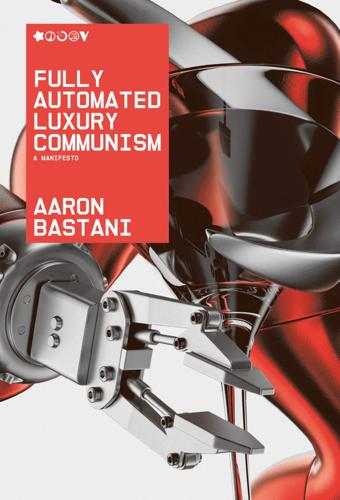
Fully Automated Luxury Communism
by
Aaron Bastani
Published 10 Jun 2019
This suggests there is another way to feed 9 billion people, one that would mean we had more than enough food for everyone, all without the need for rationing or changing eating habits. Indeed, it would make food so abundant that – as with energy, labour and resources – it would become virtually free, with the value emerging more from the informational content than inputs such as land or human effort. While you may never have heard of him, Norman Borlaug was one of the most important figures of the twentieth century. A year after receiving his PhD in 1942 he assumed an agricultural research position in Mexico where he developed semi-dwarf, high-yield varieties of wheat – a crop the country was failing to produce in sufficient amounts. These modified varieties used most of their energy to grow edible kernels rather than long, inedible stems and had the additional benefit of being disease-resistant.
…
Cellular agriculture can be understood as an approach which designs new mechanisms to re-create existing foods. While much of the attention so far has been on cultured meat, its possibilities go far wider extending into cheese without cows and yeast that can make vegetables taste like medium rare beef. Think of it, perhaps, as the work of Norman Borlaug meeting the second half of that exponential chessboard. Underpinned by the same technologies of the Third Disruption, defined by declining costs of information and exponential progress in digital technology, it is no coincidence that cellular agriculture arrived at around the same time as genome sequencing, consumer AI and autonomous vehicles.
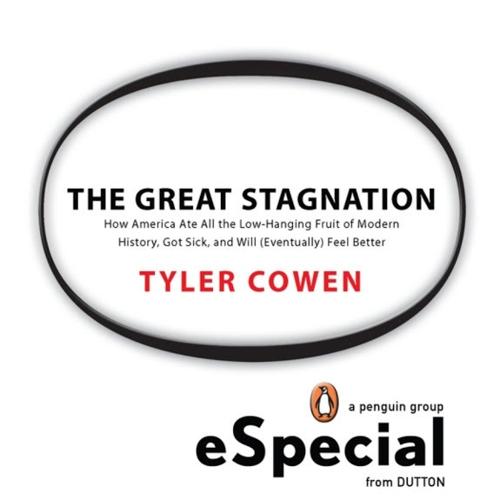
The Great Stagnation
by
Tyler Cowen
Published 24 Jan 2011
While scientists are not, in American society, a low-status group, neither are they thought of as especially high status either. Science doesn’t have the cache of law, medicine, or high finance. Few women or men dream of dating or marrying a scientist. Yet, upon reflection, are we not capable of finding Leonardo da Vinci the scientist as sexy and exciting as Leonardo da Vinci the artist? I was struck when Norman Borlaug died in 2009. Borlaug, as you may know, was a leader of the “Green Revolution” and the inventor of more robust seeds and crop varieties, which were then used in India, Africa, and many other poorer parts of the world. It is no exaggeration to say that Borlaug’s work saved the lives of millions of human beings by preventing starvation.

The Trouble With Billionaires
by
Linda McQuaig
Published 1 May 2013
It’s hard to see much of a moral principle in a system that rewards people on the basis of how much they’re willing or able to pander to the rich. The flaws in neoclassical economic theory are more evident now than ever, given today’s frenzy of pay at the top. Joseph Stiglitz, the Nobel Prize-winning economist, points to the discrepancy between the huge pay of the Wall Street crowd and that of the late agronomist Norman Borlaug, who saved millions of lives by developing methods for improving agricultural productivity: ‘If neoclassical theory were correct, Borlaug would have been among the wealthiest men in the world, while our bankers would have been lining up at soup kitchens.’ Stiglitz notes that there appears to be no justification for today’s top earners receiving so much more than those who performed similar functions in the recent past.
…
Griffin, who received more than $1 billion in 2006 as CEO of hedge fund Citadel Investment Group, commented that ‘wealth is not a particularly satisfying outcome…The money is a byproduct of a passionate endeavour.’5 A number of history’s most talented individuals, who have made some of the greatest contributions to society, have had little trouble performing without much in the way of financial incentives. Norman Borlaug, who saved millions of lives by developing methods for improving agricultural productivity, spent most of his life living modestly in Third World villages. Vincent van Gogh somehow found the motivation to produce hundreds of works of great art, even though he managed to sell only one of them in his lifetime, receiving a pittance for it just before he died.
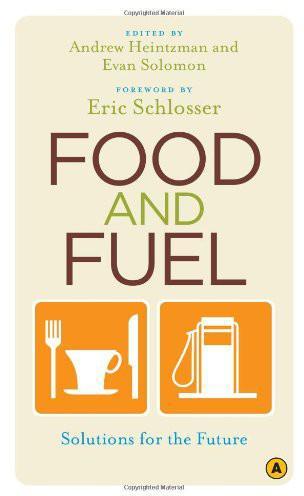
Food and Fuel: Solutions for the Future
by
Andrew Heintzman
,
Evan Solomon
and
Eric Schlosser
Published 2 Feb 2009
The key to the Green Revolution was the development of high-yield hybrid seeds, or what critics of the technology call “high-responding” because they require extensive application of inputs — including water, fertilizer, and pesticides. Although hybrid seeds produce “heterosis” or hybrid vigor (crossing two genetically distant parent plants creates offspring “superior” in terms of yield), this benefit disappears after the first generation.36 In a recent speech, Norman Borlaug, father of the Green Revolution and the 1970 Nobel Peace Prize winner, provided statistics to prove that the Green Revolution doubled, and even trebled, cereal production in some regions of the developing world from 1961 to 2000.37 But his accompanying PowerPoint slide also showed a thirty-five-fold increase in fertilizer use in those same regions and increased reliance on tractors, irrigation, and other expensive technology.
…
Smith, Seeds of Deception. 35. Margaret Mellon and Jane Rissler, Gone to Seed: Transgenic Contaminants in the Traditional Seed Supply (Cambridge, MA: Union of Concerned Scientists, 2004). 36. Definition of hybrid seeds can be found at Genetics Resources Action International (GRAIN), http://www.grain.org. 37. Norman Borlaug (lecture, Earth Institute at Columbia University, 2003). 38. Lappé and Lappé, “Seeding Annapoorna,” in Hope’s Edge, 143. 39. Ibid., 156. 40. See Third World Network, http://www.twnside.org.sg. 41. Lappé and Lappé, Hope’s Edge, 161–62. 42. Jules Pretty and Rachel Hine, “Empirical Findings of SAFE-World Project,” in Reducing Food Poverty with Sustainable Agriculture, Center for Environment and Society (University of Essex, U.K., February 2001). 43.
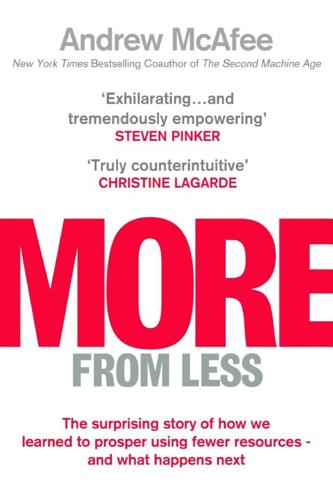
More From Less: The Surprising Story of How We Learned to Prosper Using Fewer Resources – and What Happens Next
by
Andrew McAfee
Published 30 Sep 2019
Abundant energy gave us modern fertilizers, and these fertilizers gave us freedom from the severe, deprivation-induced Malthusian population oscillations that plagued societies before the Industrial Era. To maintain this freedom we also needed other breakthroughs, such as the Green Revolution, kicked off by the American agronomist Norman Borlaug. Borlaug’s methods combined back-bending toil in fields with painstaking work at the laboratory bench to develop new varieties of crops. His work with wheat in Mexico showed what was possible and inspired similar breakthroughs, most notably at the International Rice Research Institute in the Philippines.
…
Admitted students are expected to take about three years to complete all the projects that make up the curriculum at 42. The school has campuses in Paris and Silicon Valley and is advising similar organizations in South Africa, Morocco, Romania, Bulgaria, and other countries. As discussed in chapter 2, the efforts by Norman Borlaug and others to improve wheat and rice were so important that they really do deserve to be called a Green Revolution. This work was supported over many years by the Rockefeller and Ford Foundations, which also ensured that the improved crop varieties were made available to farmers around the world for no fee.
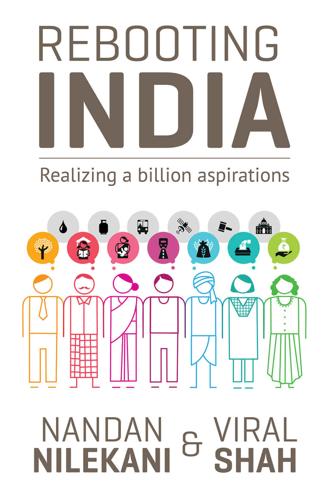
Rebooting India: Realizing a Billion Aspirations
by
Nandan Nilekani
Published 4 Feb 2016
It referred to his great faith, along with Bhabha and Nehru, in the ability of technology to enable developing countries to circumvent the long, arduous processes followed by the Western world.18 India’s self-sufficiency in foodgrains and milk are also the results of start-ups: the Green Revolution, powered by scientists like Norman Borlaug and bureaucrats like M.S. Swaminathan, and supported administratively by the Indira Gandhi government, is responsible for the former, while Operation Flood, spearheaded by Verghese Kurien, made India the largest milk producer in the world. In both cases, seemingly intractable problems were tackled by small teams that were given strong administrative support—the results speak for themselves.
…
One path to this goal was to boost the nation’s agricultural productivity. Agricultural research institutes were set up across the country to build a strong scientific infrastructure for agriculture. In a further attempt to break India’s dependence on foreign food imports, eminent scientists such as the Nobel Laureate Dr Norman Borlaug and Dr M.S. Swaminathan, the statesman C. Subramaniam and others collaborated to build plant breeding programmes and irrigation development schemes that ushered in India’s Green Revolution, allowing India to finally achieve self-sufficiency when it came to foodgrains.3 The long-ranging success of this programme can be gauged by the fact that India is now neck and neck with China as the world’s leading exporter of wheat and rice.4 As food production levels began to increase, the government took a series of policy decisions to ensure that agricultural productivity remained high, guaranteeing a steady food supply to the nation—decisions meant to protect and promote agriculture that exist to this day.

Bread, Wine, Chocolate: The Slow Loss of Foods We Love
by
Simran Sethi
Published 10 Nov 2015
His response to hunger in India was both personal and political: “At the time all our young people, myself included, were involved in the freedom struggle [from British imperial rule], which Mohandas Gandhi had intensified, and I decided I would use agricultural research in order to help poor farmers produce more.”39 Throughout Punjab, Swaminathan planted seeds developed by geneticist and plant pathologist Norman Borlaug, and worked with Indian geneticists and local farmers to crossbreed Mexican wheat with local and Japanese strains. Together, they created a semi-dwarf wheat that yielded significantly more grain than traditional types.40 “By combining scientific research with local knowledge, [and] enabling policies and communication technology, wheat production went up from 10 million tonnes in 1964 to 17 million tonnes in 1968.
…
CMP=share_btn_tw. 40.Anthony Spaeth, “M. S. Swaminathan,” Time, August 23, 1999, http://content.time.com/time/world/article/0,8599,2054394,00.html. 41.Swaminathan, “How to End Hunger.” 42.Anil Agarwal, “From Begging Bowl to Bread Basket,” Nature 281 (August 1979): 250–51, doi:10.1038/281250a0. 43.Norman Borlaug, “The Green Revolution, Peace, and Humanity,” Nobel lecture, Nobelprize.org, December 11, 1970, http://www.nobelprize.org/nobel_prizes/peace/laureates/1970/borlaug-lecture.html. 44.“Percent of Employment in Agriculture in the United States (DISCONTINUED),” Economic Research, Federal Reserve Bank of St.

American Foundations: An Investigative History
by
Mark Dowie
Published 3 Oct 2009
In fact, a reading of the documents in the Rockefeller Archives indicates clearly that Cold War geopolitics and population growth were as much on the mind of foundation trustees as feeding the masses. "Rockefeller Foundation staff and trustees saw India as an overpopulated nation, caught in a Malthusian trap and teetering on the brink of communism," writes agricultural historian John Per- kins.10 Even Rockefeller breeding geneticist Norman Borlaug came to regard his seed research in India as "buying time" against the "population monster." Perkins believes that postwar concern for national security, as much as humanitarian motives, were the ultimate driving force of the Green Revolution. That's only one historian's perspective, of course; still, agronomists and others concerned about hunger and conservation did frequently use the security argument to capture the attention of government leaders.
…
In 1971 the Consultative Group on International Agricultural Research (CGIAR) was formed; by 1983 there were thirteen research centers under the CGIAR umbrella, with a combined annual budget exceeding $100 million. Not long after CGIAR's creation, the Green Revolution met its goal of producing a global harvest of basic foodstuffs sufficient to feed the world. In 1971 Rockefeller Foundation scientist Norman Borlaug won the Nobel Peace Prize for his breeding of high-yield dwarf varieties of wheat. To many contemporary agronomists, including Robert Herdt, currently vice president for agricultural sciences at the Rockefeller Foundation, "the Green Revolution was over in 1971." Science had triumphed.17 To Brian O'Connell, a tireless booster of American philanthropy, the revolution spawned by Borlaug and Rockefeller was "the prototype of efforts to relieve human misery."18 But was it?
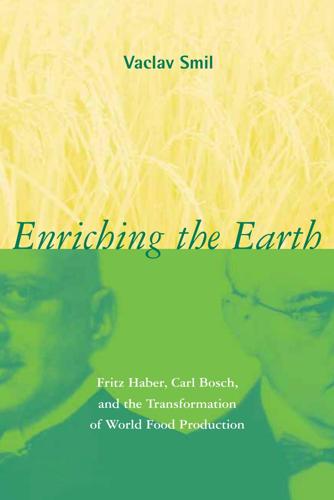
Enriching the Earth: Fritz Haber, Carl Bosch, and the Transformation of World Food Production
by
Vaclav Smil
Published 18 Dec 2000
Dutch agriculture was by far the most intensive user of nitrogen fertilizers before World War II, with applications averaging 50–60 kg N/ha, compared to 20–25 kg N/ha in Germany and less than 3 kg N/ha in the United States.28 Global consumption of nitrogen fertilizers rose to 3.63 Mt N during the crop year 1949/1950, it stood at 9.23 Mt N a decade later, and it had more than tripled to 31.7 Mt N by 1970.29 In spite of sharply higher world energy prices, consumption doubled during the 1970s to 60.7 Mt by 1980, and to about 80 Mt N eight years later (appendix M; fig. 7.2). Most of this spectacular increase was due to the rapid diffusion of new, shortstalked, high-yielding varieties of wheat and rice, an agronomic shift that became commonly known by the evocative but inaccurate name of the Green Revolution.30 Norman Borlaug, one of the leaders in developing and diffusing these new cultivars, summed up the importance of fertilizer nitrogen in his speech accepting the Nobel Peace Prize in 1970 by using a memorable kinetic analogy: If the high-yielding dwarf wheat and rice varieties are the catalysts that have ignited the Green Revolution, then chemical fertilizer is the fuel that has powered its forward thrust. . . .
…
New York: Facts on File; Belfiore, F., et al., eds. 1991. Obesity: Basic Concepts and Clinical Aspects. Farmington, Conn.: S. Karger; Garrow, J. S. 1988. Obesity and Related Disorders. New York: Churchill. 52. A much more optimistic outlook prevailed during the 1970s. Near the end of his Nobel Prize acceptance speech Norman Borlaug spoke about a dream of green, vigorous, high-yielding fields of wheat, rice, maize, sorghum and millet which are obtaining, free of expense, 100 kilograms of nitrogen per hectare from nodule-forming, 322 Notes to Chapter 10 nitrogen-fixing bacteria. These mutant strains of Rhizobium cerealis were developed in 1990 by a massive mutation breeding program with strains of Rhizobium obtained from roots of legumes and other nodule-bearing plants.
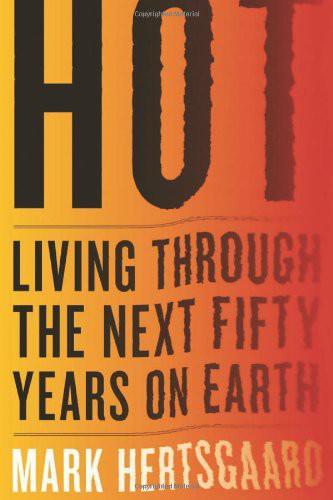
Hot: Living Through the Next Fifty Years on Earth
by
Mark Hertsgaard
Published 15 Jan 2011
On a planet where 1 billion people already don't get enough to eat and the population is projected to reach 9 billion by 2050, output and price also matter a great deal. Proponents of industrial agriculture contend that only their system can produce enough food to feed the world at prices ordinary people can afford. The late Norman Borlaug, who developed the high-yield seeds of the Green Revolution, used to call environmentalists elitists whose affluence allowed them to worry about pollution rather than starvation. "If they lived just one month amid the misery of the developing world, as I have for fifty years, they'd be crying out for tractors and fertilizer and irrigation canals...," Borlaug once said.
…
Regarding Chris Reij's estimates of 200 million trees and 12.5 million acres of land, recall that much of the scholarly documentation for the re-greening exercise can be found in the references to the WRI report previously cited, "Turning Back the Desert." Organizers of the Millennium Villages describe their work at http://www.unmillenniumproject.org/mv/index.htm. Norman Borlaug's quote was reported by Gregg Easterbrook in the January 1997 issue of the Atlantic. The study by UNEP and UNCTAD, Organic Agriculture and Food Security in Africa, is available at http://www.unctad.org/en/docs/ditcted200715_en.pdf. If only because it reframes the critical question of who was the greatest mass murderer of the twentieth century, Hungry Ghosts: Inside Mao's Secret Famine by Jasper Becker (New York: Holt, 1998) ranks among the most important nonfiction books of recent years.
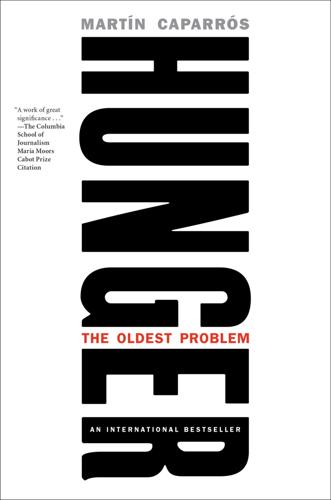
Hunger: The Oldest Problem
by
Martin Caparros
Published 14 Jan 2020
A good-tasting apple with little cold tolerance would be combined with a bland one with high tolerance to try to make one that was delicious and could withstand the cold—and so forth. That’s what they’ve always done. At the beginning of the twentieth century, the possibilities grew. Scientists from several countries tried to create hybrids that maximized resistance, yields, and results. Around 1940, American biologist and plant pathologist Norman Borlaug began to use nitrogen to fertilize wheat in order to increase its resistance to certain diseases; the experiments proved so successful that the plants, so heavily laden with grain, bent and broke. Then Borlaug discovered a gene that shrank the stalk, and this shorter, thicker stalk could hold up a heavier load of grain.
…
Perhaps the greatest revolution of 1968 was that India achieved the largest harvest in history, so much so that the government had to close schools so they could be used to store grain. Shiva wrote that “in perceiving nature’s limits as constraints on productivity that had to be removed, American experts spread ecologically destructive and unsustainable practices worldwide.” Through some arcane means, Shiva knew what the “limits of nature” were. Norman Borlaug responded that these arguments came from the “elitists” who had enough money to not worry about where their next meal would be coming from.”18 The Green Revolution led to an unprecedented increase in agricultural productivity. Between 1950 and 2000, the population of the planet increased two and a half times; food production more than tripled.
…
A Not-So Natural Disaster: Niger 2005. London: Hurst, 2009 (English translation of original French volume), pp. 105-124. 17 Patil, Pratibha. “Address by the Hon’ble President of India, Shrimati Pratibha Devisingh Patil, to Parliament.” Speech, New Delhi, June 4, 2009. Pratibhapatil.nic.in. 18 Gillis, Justin. “Norman Borlaug, Plant Scientist Who Fought Famine, Dead at 95.” New York Times. September 13, 2009. 19 Wagenhofer, Erwin and Max Annas. We Feed the World: Was uns das Essen wirklich kostet. Berlin: Orange Press, 2006. 20 “Slum” in Merriam Webster’s Collegiate Dictionary, 11 ed., 2003. 21 Davis, Mike. Planet of Slums.
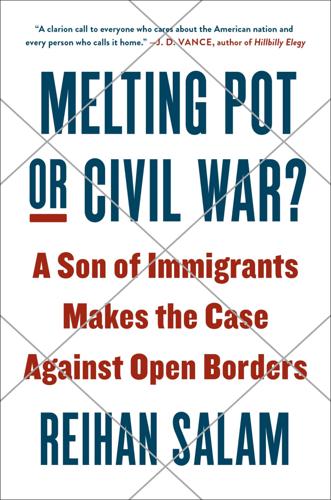
Melting Pot or Civil War?: A Son of Immigrants Makes the Case Against Open Borders
by
Reihan Salam
Published 24 Sep 2018
What I will say, though, is that when it came to his egalitarian beliefs, Haldane was willing to put his money where his mouth was: he didn’t just pay lip service to his cosmopolitan ideals; he moved to a country where he believed he could do the most good. There’s another approach, though, which I associate with the renowned agricultural scientist Norman Borlaug, the Nobel laureate who famously sparked the Green Revolution, which greatly increased agricultural yields throughout the developing world.34 I can’t speak to Borlaug’s views on immigration—as he was the son of Norwegian immigrants, I wouldn’t be at all surprised if he was favorably disposed to it.

The Precipice: Existential Risk and the Future of Humanity
by
Toby Ord
Published 24 Mar 2020
Much of the credit for this is owed to the Green Revolution, in which developing countries rose to the challenge of feeding their people. They did so by modernizing their farming, with improved fertilizers, irrigation, automation and grain varieties.96 Perhaps the greatest single contribution was from Norman Borlaug, who received the Nobel Prize for his work breeding the new, high-yield varieties of wheat, and who may be responsible for saving more lives than anyone else in history.97 But the improvements in agriculture are just part of the story. The entire picture of overpopulation has changed. Population growth is almost always presented as an exponential process—increasing by a fixed percentage each year—but in fact that is rarely the case.
…
In the 1950s, at a time when governments and drug companies had little interest in pursuing the idea, the philanthropist Katharine McCormick funded the research that led to its invention, largely single-handedly.74 Around the same time, we saw the breakthroughs in agricultural science now known as the Green Revolution, which saw hundreds of millions of people lifted from hunger through the creation of high-yield varieties of staple crops. Norman Borlaug, the scientist who led these efforts, would win the Nobel Peace Prize in 1970 for his work. Borlaug’s work, and the roll-out of these technologies in the developing world, was funded by private philanthropists.75 Finally, there are ways that every single one of us can play a role. We need a public conversation about the longterm future of humanity: the breathtaking scale of what we can achieve, and the risks that threaten all of this, all of us.
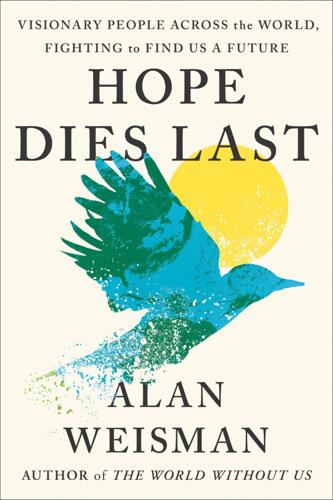
Hope Dies Last: Visionary People Across the World, Fighting to Find Us a Future
by
Alan Weisman
Published 21 Apr 2025
In the 1960s, when agronomists successfully crossbred corn, wheat, and rice to grow shorter stalks, diverting the energy saved into producing up to 10 times more grain, we skyrocketed again. This “Green Revolution” came just in time, because South Asia, breeding faster than fertilizer could keep up, was on the brink of famine. Green Revolution founder Norman Borlaug also received a Nobel—the Peace Prize, for saving more lives than anyone in history. Yet on accepting his award, he warned that when people don’t die of famine, they live to produce more people who need more food, ad infinitum—except Earth isn’t infinite. For the rest of his life, Borlaug urged population management—to no avail, due to a problem of perception.
…
“To bring all that industrial agriculture back to prairie, we’ll need to get toxins out of the ground and pull carbon out of the air. The plant that does that the fastest is hemp. So we intend to bring back a hemp economy. The only path to hope,” says Winona, “is to hope big.” A red-winged blackbird on a nearby fence post trills a song that survived an asteroid. She picks up a hoe. “The University of Minnesota’s Norman Borlaug founded the first Green Revolution. It’s time for ours.” Skip Notes *1 Land of sky-colored water. *2 Turtle Island was also their name for the North American continent. These would be turtle islands within a turtle island, echoing Algonquian cosmology of the world created from dirt heaped atop a turtle’s shell
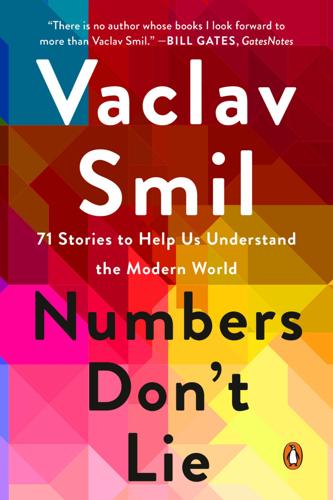
Numbers Don't Lie: 71 Stories to Help Us Understand the Modern World
by
Vaclav Smil
Published 4 May 2021
Traditional plants were tall (nearly as tall as Bruegel’s peasants cutting them with scythes), producing three to five times more straw than grain. The first modern short-stalked wheat (based on East Asian plants) was released in Japan in 1935. After the Second World War it was brought to the US and given to Norman Borlaug at CIMMYT (the International Maize and Wheat Improvement Center in Mexico), and his team produced two high-yielding semi-dwarf varieties (yielding as much grain as straw) in 1962. Borlaug won the Nobel Prize; the world got unprecedented harvests. Between 1965 and 2017, the average global wheat yield almost tripled, from 1.2 to 3.5 t/ha; the Asian average more than tripled (from 1 to 3.3 t/ha), the Chinese mean more than quintupled (from 1 to 5.5 t/ha), and the Dutch mean, already extraordinarily high two generations ago, more than doubled from 4.4 to 9.1 t/ha!

Imagining India
by
Nandan Nilekani
Published 25 Nov 2008
The crunch of food shortages during this period, for instance, gave Lal Bahadur Shastri, Nehru’s successor, an opportunity to pass some reforms in agriculture. He liberalized the fertilizer industry, opening it up to competition. The green revolution also took off thanks to new hybrid crops that Indian scientists created with the help of the Rockefeller Foundation and seeds the American agronomist Norman Borlaug sent to India. But such concessions to entrepreneurs remained rare. In the midst of the food crunch, Shastri announced that he and his family would miss a meal every Wednesday, and the government placed ads in Indian newspapers telling readers, “Remember, today is a Dinnerless Day!” But articles on the same page would be carrying speeches by politicians chewing out Indian industry.
…
The locusts decades 1964—For the government, the crises seem to have arrived all at once. Nehru dies. Crop failure and drought trigger spreading food shortages and rioting threatens to paralyze the country. 1965—Drawing lines in gunpowder: The Indo-Pakistan war to defend Jammu and Kashmir territory against Pakistani troops. —With the help of the American agronomist Norman Borlaug, Indian scientists develop a crop hybrid that triggers the green revolution and a new era of self-sufficiency. 1966—Indira Gandhi becomes prime minister, primarily because powerful Congress leaders (The Syndicate) want a placeholder on the highest seat while they fight it out for prime minister among themselves.
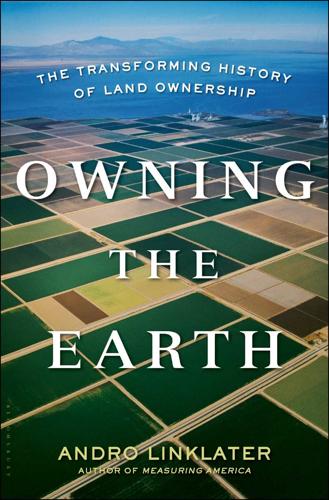
Owning the Earth: The Transforming History of Land Ownership
by
Andro Linklater
Published 12 Nov 2013
Nor did any of the despotic rulers backed by the West ever willingly give up power to a democratic assembly. What saved development strategy from its own contradictions was the spectacular success of the most effective weapon in the capitalist armory during the Cold War, the Green Revolution. * * * Awarding the 1970 nobel peace prize to Iowa-born Norman Borlaug for his work on developing high-yielding strains of wheat, the nominating committee singled out the achievements of an “eclectic, pragmatic, goal-oriented scientist” who, as their citation put it, “can perform prodigies of manual labor in the fields, [and] brings to his work the body and competitive spirit of the trained athlete.”
…
Like a European feudal knight, a samurai owed his standing to the peasants who worked his land. LIBRARY OF CONGRESS. Che Guevara. The brutal march of collectivization that laid the foundations for the cold war. LIBRARY OF CONGRESS. Walt Rostow. COURTESY OF THE LYNDON B. JOHNSON PRESIDENTIAL LIBRARY, PHOTO BY YOICHI R. OKAMOTO. Norman Borlaug. COURTESY OF FLICKR USER CIMMYT, USED UNDER CREATIVE COMMONS 2.0 LICENSE. Friederich von Hayek. LIBRARY OF CONGRESS. Yang Wu’s famous “nail house” in Chongqing. AP PHOTO/EYEPRESS. Notes Introduction: The Birth of a Revolution a storm of appalling violence: The vivid firsthand account of the Newfoundland expedition comes from Sir Humphrey Gilbert’s Voyage to Newfoundland by Edward Hayes, originally incorporated into Richard Hakluyt’s The Principall Navigations, Voiages and Discoveries of the English Nation (London: George Bishop and Ralph Newberie, 1589), www.gutenberg.org/ebooks/3338.

Doing Good Better: How Effective Altruism Can Help You Make a Difference
by
William MacAskill
Published 27 Jul 2015
Even just from Maryland to Kenya, annual remittances are more than $350 million; within one state Wave could therefore increase the amount going to Kenya every year by $24 million. After only a few months of operation, they already have thousands of users who have collectively transferred millions of dollars to Kenya. Research When Norman Borlaug was awarded the Nobel Peace Prize in 1970, the committee suggested that he’d saved one billion lives. Was he a politician? Or a military leader? Or a superhero? No, he was a fairly regular guy from Iowa who worked in agricultural research. He wasn’t a typical academic: his credentials were limited, and he used techniques that had been available to the Victorians.
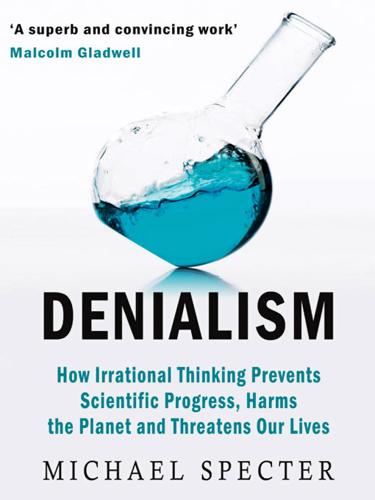
Denialism: How Irrational Thinking Hinders Scientific Progress, Harms the Planet, and Threatens Our Lives
by
Michael Specter
Published 14 Apr 2009
Between 1960 and 1985—during which time Erlich published his book and the Club of Rome issued The Limits to Growth, its modern echo of Malthus’s grim assessment—food production in most of the world’s poorest countries more than doubled. The revolution began as a single experiment by one man, Norman Borlaug, an American plant scientist, who while working in Mexico had spent years crossing the local wheat with Japanese dwarf varieties to produce plants that could respond better to irrigation and benefit more consistently from fertilizer. That approach was quickly applied to corn, beans, and rice, and the results could soon be seen planted across hundreds of millions of acres throughout Latin America and Asia.

Simple Rules: How to Thrive in a Complex World
by
Donald Sull
and
Kathleen M. Eisenhardt
Published 20 Apr 2015
. [>] He wrote a seminal: Warren Weaver, “Translation” (unpublished memorandum, Rockefeller Foundation, July 15, 1949), available at Machine Translation Archive, http://www.mt-archive.info/Weaver-1949.pdf; and Matt Novak, “The Cold War Origins of Google Translate,” BBC Online, May 30, 2012, http://www.bbc.com/future/story/20120529-a-cold-war-google-translate. Weaver also coauthored, with Claude E. Shannon, The Mathematical Theory of Communication (Champaign: University of Illinois Press, 1949), which laid out the principles required to build modern telecommunications networks, including the Internet. [>] When India and: Justin Gillis, “Norman Borlaug, Plant Scientist Who Fought Famine, Dies at 95,” New York Times, September 13, 2009. [>] In his 1948 article: Weaver, “Science and Complexity,” 536–44. Weaver used the term disorganized complexity to describe problems we call “uncertain,” and organized complexity to denote those we refer to as “complex.”
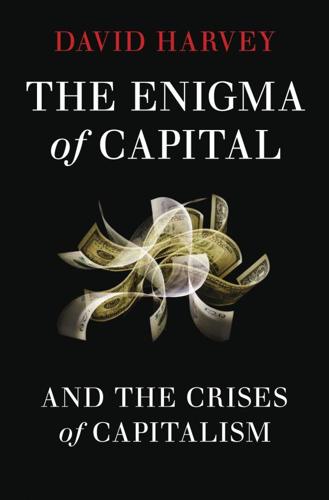
The Enigma of Capital: And the Crises of Capitalism
by
David Harvey
Published 1 Jan 2010
How to understand the dialectical unfolding of the social relation to a nature that is itself perpetually evolving is the issue. The so-called ‘green revolution’ in agriculture is a fabulous example of how changes in all seven spheres of activity can co-evolve. Beginning in Mexico in the 1940s, new strains of wheat were bred in a new agricultural research institute under the direction of a young scientist, Norman Borlaug (who died in 2009). These new genetically modified strains of wheat led to the quadrupling of wheat yields by the end of the century and turned Mexico from a net importer to a net exporter of wheat in the decade after 1945. When taken to south Asia in the 1960s (promoted by US foundations like Ford and Rockefeller in alliance with Indian and Pakistani governments), new strains of wheat and rice doubled yields between 1965 and 1970, with huge impacts on food security and global food grain costs, which were cut in half.
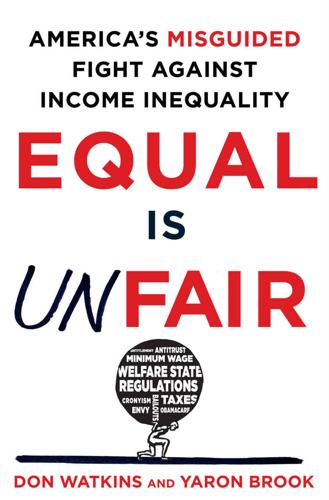
Equal Is Unfair: America's Misguided Fight Against Income Inequality
by
Don Watkins
and
Yaron Brook
Published 28 Mar 2016
Thomas Newcomen discovers how to make the first practical steam engine and launches the machine age. Henry Ford discovers how to dramatically lower costs through mass production and puts millions of Americans behind the wheel of a car. Louis Pasteur discovers the principles of vaccination and saves untold millions of lives. Norman Borlaug discovers ways to make major improvements in agriculture, saving over a billion people from starvation. The source of human progress is human ability, which means intellectual ability. The greatest contributors to production are not those who supply physical labor but those who contribute ideas—new theories, inventions, tools, businesses, and methods—to the productive process.
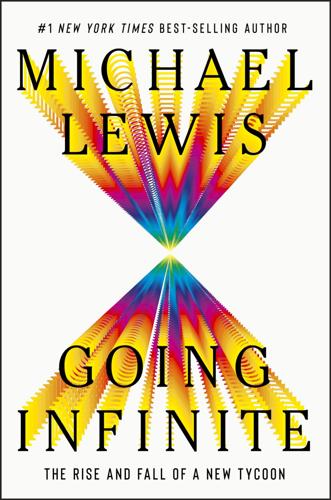
Going Infinite: The Rise and Fall of a New Tycoon
by
Michael Lewis
Published 2 Oct 2023
Eventually, he told the students, you were going to have to choose which sort of career you would pursue. Each career type came with the opportunity to save lives, but the math was different for each, a bit like the math for which hero to play in Storybook Brawl. A Researcher or an Influencer stood a chance of saving some massive number of lives. The agronomist Norman Borlaug (Researcher), for instance, had invented disease-resistant wheat, which had saved roughly two hundred fifty million people from starvation. Researcher and Influencer, however, were tricky career choices: it was difficult to predict who would be good at them, and even harder to forecast their effects.
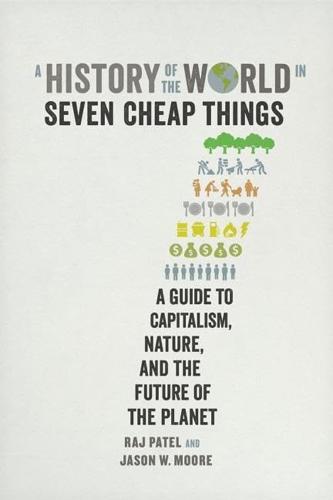
A History of the World in Seven Cheap Things: A Guide to Capitalism, Nature, and the Future of the Planet
by
Raj Patel
and
Jason W. Moore
Published 16 Oct 2017
“The World Food Problem, Agriculture, and the Rockefeller Foundation,” a strategic document issued by the Rockefeller Foundation in 1951, almost a decade after it had begun to work in Mexico, crystallized the themes of insurgency, population, and food: “Whether additional millions . . . will become Communists will depend partly on whether the Communist world or the free world fulfils its promises. Hungry people are lured by promises, but they may be won by deeds. Communism makes attractive promises to underfed peoples. Democracy must not only promise as much, but must deliver more.”49 The foundation went to work in Mexico in 1943, recruiting a brilliant young plant breeder, Norman Borlaug, to develop crops to prevent urban hunger. That it was urban and not rural hunger that troubled policy makers is vitally important. Food and employment for people in rural areas—where most of the world’s hunger was concentrated—was of little concern. Hunger began to matter politically only when the poor came to the cities and translated it into anger, and thence potentially into insurrection and a challenge to the rule of cheap nature.

The Obesity Code: Unlocking the Secrets of Weight Loss
by
Jason Fung
Published 3 Mar 2016
Yet these days, what with gluten sensitivity and obesity, wheat does not have a friend to call its own. But how can wheat possibly be so bad? As discussed in chapter 9, wheat has been cultivated since ancient times. But by the 1950s, Malthusian concerns of overpopulation and worldwide famine arose again. Norman Borlaug, who would later win the Nobel Peace Prize, began experimentating with higher-yield wheat varieties, and thus was born the dwarf-wheat variety. Today, an estimated 99 percent of all wheat grown worldwide is dwarf or semi-dwarf varieties. But where Dr. Borlaug bred naturally occurring strains together, successors quickly turned to new technologies to enhance mutations.

How to Spend a Trillion Dollars
by
Rowan Hooper
Published 15 Jan 2020
Hundreds of millions more hectares will be needed in the next 40 years to meet demand, and most of this, if we don’t do anything about it, will come from the tropics.15 We can’t afford this for biodiversity reasons, but mainly because the most critically important region, the Amazon rainforest, has already been deforested close to a tipping point of destruction, as we have seen. The twentieth century’s Green Revolution transformed agriculture across the world. Its central figure was American agronomist Norman Borlaug, who pioneered the use of high-yield varieties of crops and combined them with intensive agricultural methods in India, Pakistan, Mexico and other countries. He won numerous awards, including the Nobel Peace Prize, but the most extraordinary accolade associated with Borlaug is that he is credited with saving over 1 billion people from starvation.
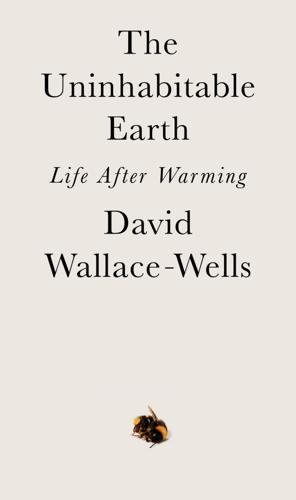
The Uninhabitable Earth: Life After Warming
by
David Wallace-Wells
Published 19 Feb 2019
But though the green revolution seems almost too perfectly conceived and executed to refute Ehrlich’s alarmism, Mann himself is not sure what the lessons are. It may yet be a bit early to judge Ehrlich—or perhaps even his godfather, Malthus—since nearly all of the astonishing productivity gains of the last century trace back to the work of a single man, Norman Borlaug, perhaps the best argument for the humanitarian virtue of America’s imperial century. Born to Iowa family farmers in 1914, he went to state school, found work at DuPont, and then, with the help of the Rockefeller Foundation, developed a new collection of high-yield, disease-resistant wheat varieties that are now credited with saving the lives of a billion people worldwide.

Windfall: The Booming Business of Global Warming
by
Mckenzie Funk
Published 22 Jan 2014
In 2020, herbicide tolerance—the trait that made the industry’s fortunes up to now—would be worth less than 100 million euros. The traits that constituted what CropDesign called “intrinsic yield”—drought tolerance, salt tolerance, stress tolerance—would be worth 2 billion euros. The Belgian explained what Norman Borlaug had achieved in the 1960s with the Green Revolution: density. “Take the individual corn plant forty years ago and the individual corn plant today,” he said, “and the difference is not that much. The big difference is that when I was a child, I could run through the cornfields and build houses in the cornfields.
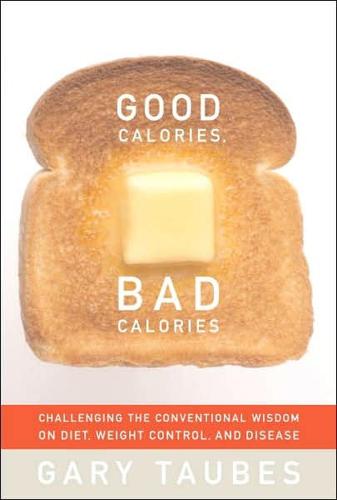
Good Calories, Bad Calories: Challenging the Conventional Wisdom on Diet, Weight Control, and Disease
by
Gary Taubes
Published 25 Sep 2007
Saturated fat may have been perceived as the problem, but saturated fat was still considered to be synonymous with animal fat, and much of the fat in the American diet came from animal foods, particularly red meat. Ironically, by 1968, when Paul Ehrlich had declared in The Population Bomb that “the battle to feed all humanity” had already been lost, agricultural researchers led by Norman Borlaug had created high-yield varieties of dwarf wheat that ended the famines in India and Pakistan and averted the predicted mass starvations. In 1970, when the Nobel Foundation awarded its Peace Prize to Borlaug, it justified the decision on the grounds that, “more than any other single person,” Borlaug had “helped to provide bread for a hungry world.”
…
“Incidence of Dementia and Alzheimer Disease in 2 Communities: Yoruba Residing in Ibadan, Nigeria, and African Americans Residing in Indianapolis, Indiana.” JAMA. Feb. 14; 285(6):739–47. Hesse, F. G. 1959. “A Dietary Study of the Pima Indian.” American Journal of Clinical Nutrition. Sept.–Oct.; 7:532–37. Hesser, L. 2006. The Man Who Fed the World: Nobel Peace Prize Laureate Norman Borlaug and His Battle to End World Hunger. Dallas: Durban House. Hetherington, A. W., and S. W. Ranson. 1942. “The Spontaneous Activity and Food Intake of Rats with Hypothalamic Lesions.” American Journal of Physiology. June; (4):609–17. ———. 1940. “Hypothalamic Lesions and Adiposity in the Rat.” Anatomical Record.:149–72. ———. 1939.

Growth: From Microorganisms to Megacities
by
Vaclav Smil
Published 23 Sep 2019
Samples of Norin 10 were brought to the US by an American breeder visiting Japan after World War II, and Orville Vogel used the cultivar to produce Gaines, the first semidwarf winter wheat suitable for commercial production, released in 1961 (Vogel 1977). Vogel also provided Norin 10 to Norman Borlaug, who led Mexico’s antilodging, yield-raising breeding program that has operated since 1966 as CIMMYT, the International Maize and Wheat Improvement Center. CIMMYT released the first two high-yielding semidwarf commercial Norin 10 derivatives (Pitic 62 and Penjamo) in 1962 (Lumpkin 2015). These cultivars and their successors enabled the sudden yield growth that became known as the Green Revolution and resulted in a Nobel Prize for Norman Borlaug (Borlaug 1970). Their harvest indices were around 0.5, yielding as much edible grain as inedible straw, and their worldwide diffusion changed the yield prospects.
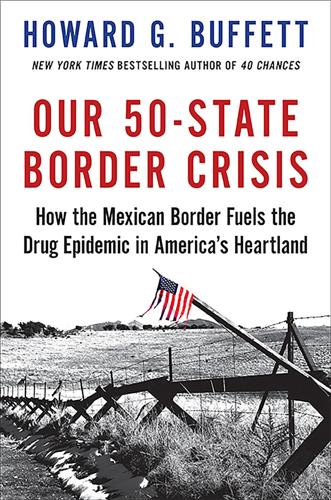
Our 50-State Border Crisis: How the Mexican Border Fuels the Drug Epidemic Across America
by
Howard G. Buffett
Published 2 Apr 2018
Orden Mexicana del Aguila Azteca a Promotores del TLCAN [Press release]. Retrieved October 17, 2017, from http://zedillo.presidencia.gob.mx/pages/vocero/boletines/com2540.html. 10 Conservation Agriculture Going Strong in Sonora. (2009, April 27). Retrieved October 17, 2017, from http://www.cimmyt.org/conservation-agriculture-going-strong-in-sonora/. 11 Norman Borlaug Biography, Nobel Prize. (n.d.). Retrieved October 17, 2017, from https://www.nobelprize.org/nobel_prizes/peace/laureates/1970/borlaug-bio.html. 12Department of State, Bureau of Consular Affairs. (2017, November 22). International Travel, Mexico. Retrieved January 26, 2018, from https://travel.state.gov/content/travel/en/international-travel/International-Travel-Country-Information-Pages/Mexico.html. 13 The World’s Most Dangerous Cities. (2017, March 31).
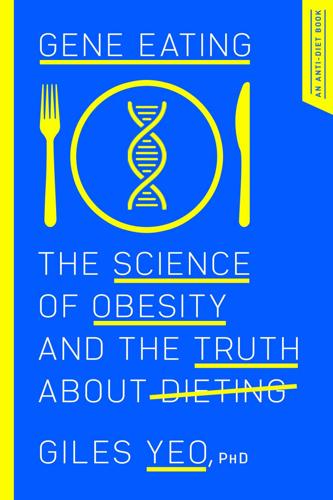
Gene Eating: The Science of Obesity and the Truth About Dieting
by
Giles Yeo
Published 3 Jun 2019
The other problem with tall wheat is that it is wavy and very top-heavy once the seeds are at full size, resulting in a percentage of wheat flopping over, with the seeds getting stuck in the ground and not being harvested. This is far less likely to happen with the shorter variety. Thus, dwarf wheat, which was hybridised and bred in Mexico by Norman Borlaug in the mid-1940s–50s, required fewer resources to produce the same amount of food. This was such a critical development in increasing the world’s food supply on a planet rapidly becoming more crowded that Norman was awarded the Nobel Peace Prize in 1970. But Bill then goes on to question the safety of the dwarf wheat that all of us eat today.
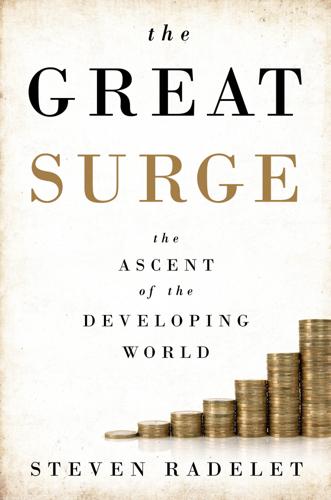
The Great Surge: The Ascent of the Developing World
by
Steven Radelet
Published 10 Nov 2015
THE GREEN REVOLUTION CONTINUES No other set of technological changes has been as important to developing countries as the Green Revolution, which continues to benefit the global poor today. In response to growing population pressures in the 1940s and 1950s, scientists and agricultural specialists under the leadership of plant scientist Norman Borlaug developed new seeds, fertilizers, and farming practices that transformed global agriculture, especially in Asia. These discoveries—triggered by cooperative efforts between private companies, the Rockefeller Foundation and the Ford Foundation, international organizations, national governments in developing countries, and international aid agencies (in particular the US Agency for International Development)—led to rapid expansions in food production and gains in nutrition that have been central to the improvements in health and economic growth in Asia.
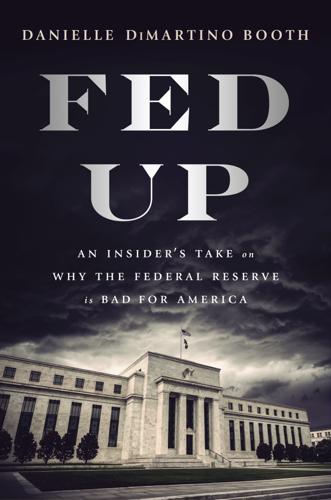
Fed Up: An Insider's Take on Why the Federal Reserve Is Bad for America
by
Danielle Dimartino Booth
Published 14 Feb 2017
The FOMC voted no: FR: FOMC Statement, September 18, 2013, www.federalreserve.gov/newsevents/press/monetary/20130918a.htm. “It should also correct”: Kevin Warsh, “QE Untested, Incomplete Experiment,” Wall Street Journal, November 12, 2013. “I would argue”: FRBD: Richard Fisher, “Comments on Monetary Policy (With Praise for Urban Lehner, Norman Borlaug and Dentists)” (speech, DTN/Progressive Farmer AG Summit, Chicago, Illinois, December 9, 2013), www.dallasfed.org/assets/documents/news/speeches/fisher/2013/fs131209.pdf. During his short stint: Damian Paletta, “Larry Summers Circles as Fed Opening Looms,” Wall Street Journal, July 7, 2013, www.wsj.com/articles/SB10001424127887324260204578588230022479170.
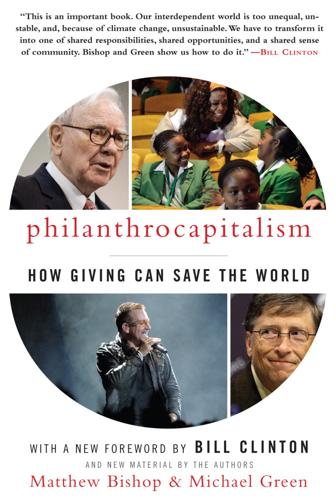
Philanthrocapitalism
by
Matthew Bishop
,
Michael Green
and
Bill Clinton
Published 29 Sep 2008
In 2006, he announced a partnership with one of the foundations created during an earlier golden age of philanthropy, the Rockefeller Foundation, to increase the productivity (and thus, income) of poor farmers in Africa. The Alliance for a Green Revolution in Africa aims to build on what many people believe is philanthropy’s greatest ever success: the first “green revolution.” Over many years the Rockefeller Foundation, guided by Norman Borlaug, funded research into how to increase crop yields in poor countries, which is reckoned to have saved over one billion lives since the 1940s. But most of those lives were in Asia, not Africa. As global food prices continue to rise beyond the reach of the poor, Gates believes something just as dramatic can now be done about that.

Warnings
by
Richard A. Clarke
Published 10 Apr 2017
His analytical failures seem mainly attributable to not taking into account feedback loops, i.e. not considering the role that could be played by elements of the system adjusting to address the problem. As demand for food increased, research organizations like the Rockefeller Institute, Manila’s International Rice Research Institute, big agribusinesses like ADM and Monsanto, and Nobel Peace Prize–winning biologist Norman Borlaug developed ways to substantially increase crop yields. Governments, international organizations, and NGOs did promote birth control. Increased levels of education and entry into the workforce of women also reduced birth rates. There are those who believe that Ehrlich was not wrong, just premature.
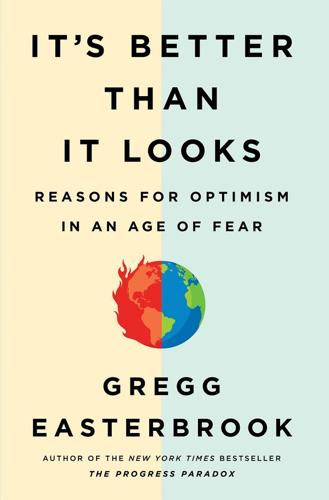
It's Better Than It Looks: Reasons for Optimism in an Age of Fear
by
Gregg Easterbrook
Published 20 Feb 2018
Winning a scholarship to college, he studied agronomy and pondered an idea about how to make crops produce more food using less soil. Then he went out into the world and saved a billion people. At a time of creepy politicians and cringe-worthy cultural figures, it is said the young lack heroes. A shame, then, that hardly any young people recognize the name Norman Borlaug, despite his entirely admirable life, including the 1970 Nobel Peace Prize. Borlaug lived most of his years far from the land of his birth, assisting African, Asian, and Mexican researchers and extension officials in what would come to be called the Green Revolution. The movement Borlaug started is the reason most of the seven billion people on our planet have plenty to eat—and all would have plenty if food distribution were improved.

Culture and Prosperity: The Truth About Markets - Why Some Nations Are Rich but Most Remain Poor
by
John Kay
Published 24 May 2004
Very little happened following Fleming's now famous discovery. The drug could only be useful if it could be absorbed and produced in large quantities, and Florey had difficulty securing even philanthropic funding for this research. Judson (1980). 6. Schwartz (2002), Fisher (1997), Godfrey and Sterling (2001). 7. Norman Borlaug, an American whose principal work was undertaken at the International Maize and Wheat Center in Mexico, received the Nobel Peace Price in 1970 for his contribution to the green revolution. 8. Freiberger and Swaine (2000), Kaplan (1999). 9. Lucent was floated off from AT&T in 1996 at $27 per share.
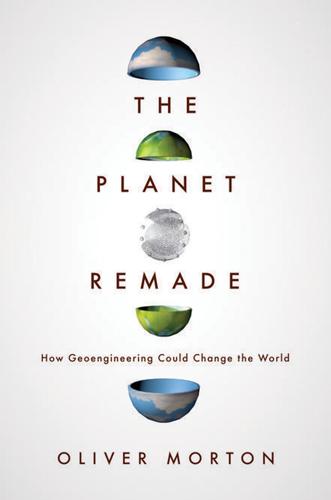
The Planet Remade: How Geoengineering Could Change the World
by
Oliver Morton
Published 26 Sep 2015
In 1943 the Rockefeller Foundation set up a ‘Mexican Agricultural Program’ to investigate how the country could feed itself efficiently and avoid stripping itself of resources. Vogt visited it soon after it was opened, emphasizing the importance of soil conservation and organic farming which eschewed industrial inputs. The second part of his advice was ignored. One of the Rockefeller workers, Norman Borlaug, a gifted breeder of plants, was struck by the poverty of Mexico’s soils, especially their lack of nitrates – a poverty he went on to see as basic to soils in most of the countries of the tropics and subtropics. The local crop varieties, he knew, were adapted to this poverty; they yielded little and grew sparsely because they had little to work with.

Wealth and Poverty: A New Edition for the Twenty-First Century
by
George Gilder
Published 30 Apr 1981
When a company reaches a certain size, it becomes an object of assault by government and by countless pressure groups professing to enhance the interests of “the people.” Despite the achievements of such heroic creators as John D. Rockefeller, J. J. Hill, Andrew Carnegie, Thomas Edison, George Westinghouse, George Eastman, Henry Ford, Walt Disney, A. P. Giannini, Estée Lauder, Charles Merrill, Chester Carlson, Bill Gates, Ray Kroc, Norman Borlaug, Michael Milken, Steve Jobs, Jeff Bezos, Mark Zuckerberg, Larry Page, Sergey Brin, and so many others, commerce is perceived as a somewhat-grubby, less-than-exalted undertaking. It is portrayed as something of a Faustian bargain: businesspeople succeed by appealing to our baser instincts; they are motivated by greed and too often may bend the rules.
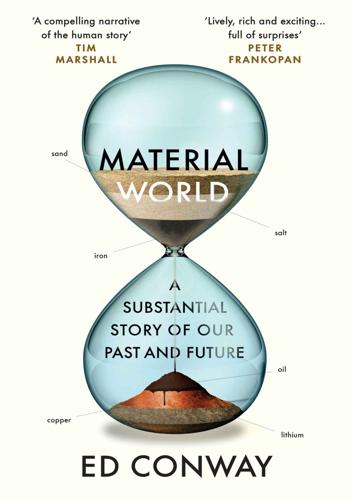
Material World: A Substantial Story of Our Past and Future
by
Ed Conway
Published 15 Jun 2023
The synthetic ammonia developed by Fritz Haber and Carl Bosch meant that despite exhausting all the guano of the Chincha Islands and much of the nitrates in the Chilean desert, humankind now had an essentially limitless supply of nitrogen to help grow crops. The development of special breeds of wheat by Norman Borlaug had helped launch a green revolution that was feeding the world. Sure, the planet is by definition finite, reasoned Simon, but its resources are far greater than we imagine. And if we ran out of one material wouldn’t we just invent or substitute another one for it?7 Now in some senses these two men were rehashing a very old debate, one that has raged since at least the era of ancient Greece.
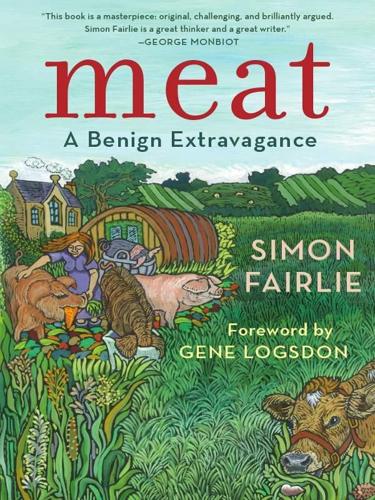
Meat: A Benign Extravagance
by
Simon Fairlie
Published 14 Jun 2010
The short term solution to this problem, we should not forget, was the elimination of about a third of the population in the Black Death – an event that the modern historian might consider to be not so much fortuitous as ‘Gaian’. Opponents of organic agriculture have not been slow to point this out. There is a camp of 800 scientists and pundits, including Norman Borlaug (the architect of the green revolution), James Lovelock (of Gaia fame), Dennis Avery (of the Hudson Institute) and Matt Ridley (the UK’s best known contrarian and former chairman of Northern Rock) who, under the aegis of the Center for Global Food Issues, have signed a declaration ‘In Support of Protecting Nature with High Yielding Farming and Forestry’.35 The gist of this declaration, laid out most explicitly in supporting information written by Dennis Avery, is that to provide sufficient nitrogen to feed the future population of 8.5 billion people which industrialization will spawn, we will have to resort not only to chemical fertilizers, but also to genetic manipulation.

The Relentless Revolution: A History of Capitalism
by
Joyce Appleby
Published 22 Dec 2009
Once on board, the Rockefeller Foundation established the International Center for Maize and Wheat Improvement in Mexico and the International Rice Research Institute in the Philippines. There they drew upon the skill of geneticists to develop new strains of rice, wheat, and maize that would respond to new fertilizers and grow short, stout stalks to hold up heavier heads of grain. Norman Borlaug, like Wallace an Iowa farm boy, who knew a thing or two about raising wheat and corn, won a Nobel Prize for his modified strains of wheat and rice. Starting in 1963, Ford, Rockefeller, and the United States Agency for International Development carried these seeds to the southwestern wheat belt that extends from India’s Punjab district through to Turkey.

Editing Humanity: The CRISPR Revolution and the New Era of Genome Editing
by
Kevin Davies
Published 5 Oct 2020
After studying the cormorants and the weather patterns, Vogt concluded it was not possible to obtain more guano, “to augment the increment of excrement.” But as Hockfield points out, the export of guano to Great Britain caused another surge in agricultural productivity. The wizard adversary to Vogt’s prophet was plant geneticist Norman Borlaug, the father of the Green Revolution. In the mid-1950s, Borlaug, an expert at interspecies hybridization, developed semi-dwarf wheat, which probably saved millions of lives after it was introduced to India in 1962, earning him a Nobel Prize. It now makes up 99 percent of all wheat planted around the world.
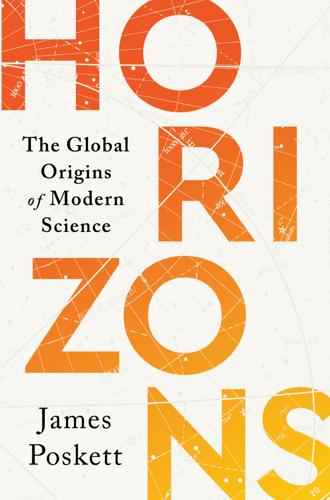
Horizons: The Global Origins of Modern Science
by
James Poskett
Published 22 Mar 2022
‘I asked myself, why did I study genetics? It was to produce enough food in India. So I came back,’ he later explained.34 It was around this time that he first learned about the work being done by the Mexican Agricultural Program. Excited by the potential of the Green Revolution, Swaminathan wrote to Norman Borlaug, one of the American geneticists working in Mexico, asking for assistance. This was part of a long and fruitful scientific exchange between India and Mexico, one that continues to this day. In March 1963, Borlaug visited the Indian Agricultural Research Institute in Delhi, bringing with him some samples of improved varieties of Mexican wheat in his suitcase.

Deep Utopia: Life and Meaning in a Solved World
by
Nick Bostrom
Published 26 Mar 2024
An objectivist can charge that the hybrid theorist incorrectly denies meaning in cases where the subject happens to lack the requisite kind of enthusiasm for her life project but is nevertheless doing work of great value and moral significance. For example, if we consider the life of some great humanitarian, such as perhaps Mother Teresa or Norman Borlaug, and imagine (counterfactually) that they had no passion for their work and did not find it personally fulfilling but that they persevered anyway because they considered themselves morally obligated to help relieve human misery—it seems counterintuitive to render the verdict, as Wolf’s theory does, that their lives were meaningless.216 (Metz’s theory handles this objection a bit better, as it would accord these lives at least some meaning.)

Power and Progress: Our Thousand-Year Struggle Over Technology and Prosperity
by
Daron Acemoglu
and
Simon Johnson
Published 15 May 2023
IR8 and related cultivars developed in collaboration with Indian research institutes were soon being adopted in India as well and revolutionized that country’s agriculture, in some places increasing yields by as much as tenfold. International funding from the Rockefeller Foundation and the leadership of scientists, especially the agronomist Norman Borlaug, who was later awarded the Nobel Peace Prize for saving more than a billion people from starvation, were instrumental as well. Today, we are confronted with the mother of all inappropriate technologies, in the form of AI, but there are no efforts analogous to the Green Revolution (nor are many AI researchers attempting to fill Borlaug’s shoes).
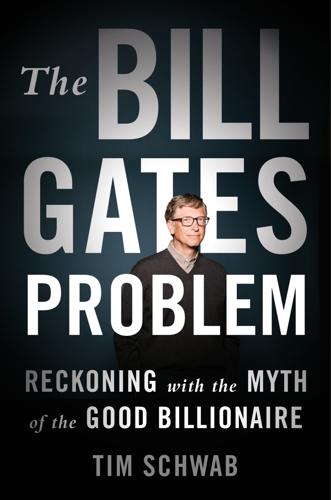
The Bill Gates Problem: Reckoning With the Myth of the Good Billionaire
by
Tim Schwab
Published 13 Nov 2023
By increasing yields, the thought was, poor people could produce more food, end hunger, and become self-sufficient in agriculture. With massive investments from foundations and governments, the green revolution initially seemed to see major successes in countries like India, which charted substantial yield increases. Norman Borlaug, often referred to as the “father” of the green revolution, even won a Nobel Peace Prize for this work. Yet many of the initial gains seemed to diminish or disappear over time. Applying large volumes of synthetic chemicals proved damaging to the soil. And the large funding required to pay for all the new inputs drove farmers into debt and then drove a decades-long wave of suicides.
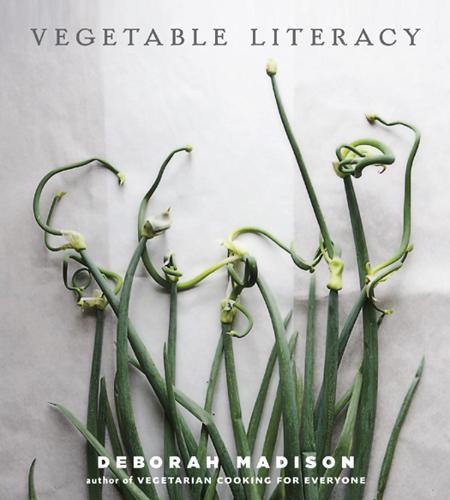
Vegetable Literacy
by
Deborah Madison
Published 19 Mar 2013
It was a predominant grain in northern Mexico, Arizona, and California until just after the Civil War, when it lost favor to modern hybrids and harder wheats because they worked better in the new roller mills. One of the most disease-resistant and drought-tolerant grains, Sonoran White was used by Norman Borlaug to develop a heartier strain of wheat for the Green Revolution. Not only was it a vigorous strain that grew well in the dry areas, but it also proved perfect for making the large Sonoran tortillas used for burritos. The cultivation of Sonoran White returned to California and Arizona in 1991. Gary Nabhan, who recently grew 25 acres of Sonoran wheat in southern Arizona, says that while it has less gluten than hard wheats, it has more protein than most soft wheats, making it something of an “in between” wheat

Enlightenment Now: The Case for Reason, Science, Humanism, and Progress
by
Steven Pinker
Published 13 Feb 2018
The amount of every other foodstuff that can be bought with an hour of labor has multiplied as well: from a pound of butter to five pounds, a dozen eggs to twelve dozen, two pounds of pork chops to five pounds, and nine pounds of flour to forty-nine pounds.20 In the 1950s and ’60s, another giga-lifesaver, Norman Borlaug, outsmarted evolution to foment the Green Revolution in the developing world.21 Plants in nature invest a lot of energy and nutrients in woody stalks that raise their leaves and blossoms above the shade of neighboring weeds and of each other. Like fans at a rock concert, everyone stands up, but no one gets a better view.